Embracing the soul of New Zealand’s rural heritage
SPRING 2023
Free trade options open for exporters
Ruralco celebrates 60 years of empowering farming communities
The power of learning firsthand


Embracing the soul of New Zealand’s rural heritage
SPRING 2023
Free trade options open for exporters
Ruralco celebrates 60 years of empowering farming communities
The power of learning firsthand

It’s that time of year again, where we welcome longer days and warmer weather, and plan out how to make the most of both.
In addition to looking forward, Ruralco is also looking back as we celebrate our 60th anniversary. In the Spring edition of Real Farmer we recap on our 2023 Instore Days and take a walk down memory lane, catching up with some of our early members and celebrating all that has been achieved over the decades passed.
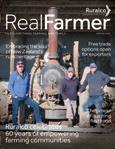
We also catch up with Mid Canterbury couple Richie Morris and Hannah Kidd, who are embracing New Zealand’s rural lifestyle through art, business, and their home.
We discover how New Zealand’s farming operations are being used to educate and inspire students from South Dakota State University who are travelling to Mid Canterbury to experience kiwi agriculture firsthand.
We also delve into the ins and outs of the opportunities presented to New Zealanders by the government’s 2022 NZ-UK Free Trade Agreement, as well as what may lay ahead with speculation on future alliances and export opportunities.
RURALCO PO Box 433, Ashburton 7740 0800 787 256 www.ruralco.co.nz
EDITORIAL ENQUIRIES: Our team welcome your contributions, enquiries and letters. Please email to: marketing@ruralco.co.nz
ADVERTISING ENQUIRIES: Please contact the Marketing Department on: 0800 787 256 marketing@ruralco.co.nz
Rob Sharkie robert.sharkie@ruralco.co.nz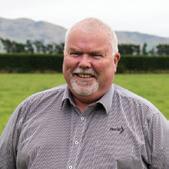
DISCLAIMER: Views expressed by contributors are not necessarily those of Ruralco.
CONTRIBUTORS
Anita Body
Annette Scott
Annie Studholme
Rachel Rickard
Richard Rennie

PHOTOGRAPHERS
Annie Studholme
Gina Ensor
Indiana Roberts
TECHNICAL ARTICLES
Allied Petroleum 0800 383 566 www.alliedpetroleum.co.nz
Ballance Agri-Nutrients 0800 787 256 ruralco@ruralco.co.nz www.ruralco.co.nz
Barenbrug 03 318 8514 www.barenbrug.co.nz
Beef + Lamb 0800 233 352 enquiries@beeflambnz.com www.beeflambnz.com
Cropmark Seeds 0800 427 676 callum.davidson@cropmark.co.nz www.cropmarkseeds.com
DairyNZ 0800 4 324 7969 info@dairynz.co.nz www.dairynz.co.nz
FAR 03 3455783 far@far.org.nz www.far.org.nz
FMG 0800 366 466 contact@fmg.co.nz www.fmg.co.nz
Irrigation NZ 04 595 6848 admin@irrigationnz.co.nz www.irrigationnz.co.nz
Pioneer 0800 746 633 www.pioneer.co.nz
Platinum Energy 03 349 2783 liam@platinumenergy.co.nz www.platinumenergy.co.nz
RAGT 03 344 1690 office@ragt.nz www.ragt.nz
RD Petroleum 0800 440 014 www.rdp.co.nz
Rural Contractors 0800 424 266 office@ruralcontractors.org.nz www.ruralcontractors.org.nz
Rural Support 0800 787 254 www.rural-support.org.nz RutsPlus.com 022 372 3586 info@rutsplus.co.nz www.rutsplus.com
ON THE COVER: John, Errol and Paul Stewart
2 Ruralco celebrates 60 years of empowering farming communities
8 Embracing the soul of New Zealand’s rural heritage
16 Free trade options open for exporters
22 The power of learning firsthand
33 Ruralco Instore Days success exceeds cautious expectations
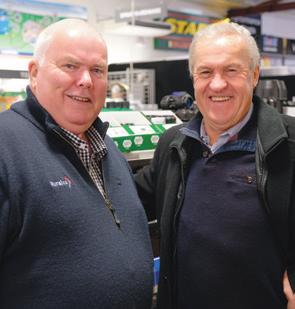
36 Ruralco Kids embrace farming with heart and art
13 Fodder beet remains a staple option
21 Supplying the South Island with competitive home heating diesel
27 Coastal Challenge calling
28 Harnessing the sun: embracing solar energy on farm
32 New spring barley launched to the New ealand market
40 Micronutrients for wheat
44 Feed insurance in a variable climate
51 Max out your feed budget, in a good way
52 Grower group tries out alternative sources of nitrogen


53 Beans a way to grow own nitrogen
55 Backing the alternative
63 Your health & safety experts are your staff
65 Management factors a focus of internal parasite control
67 Building a solid mating plan
69 Building a resilient future for the New Zealand farming sector
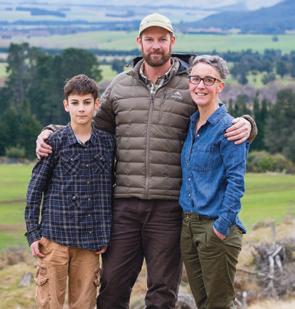

46 Starting fresh in spring
57 Mid Canterbury Rural Support Trust
57 Long serving Ruralco staff member retires
58 FMG—helping to protect rural communities together
15 Winning the 2023 Runner-up Agri-Innovation Award says a lot RutsPlus
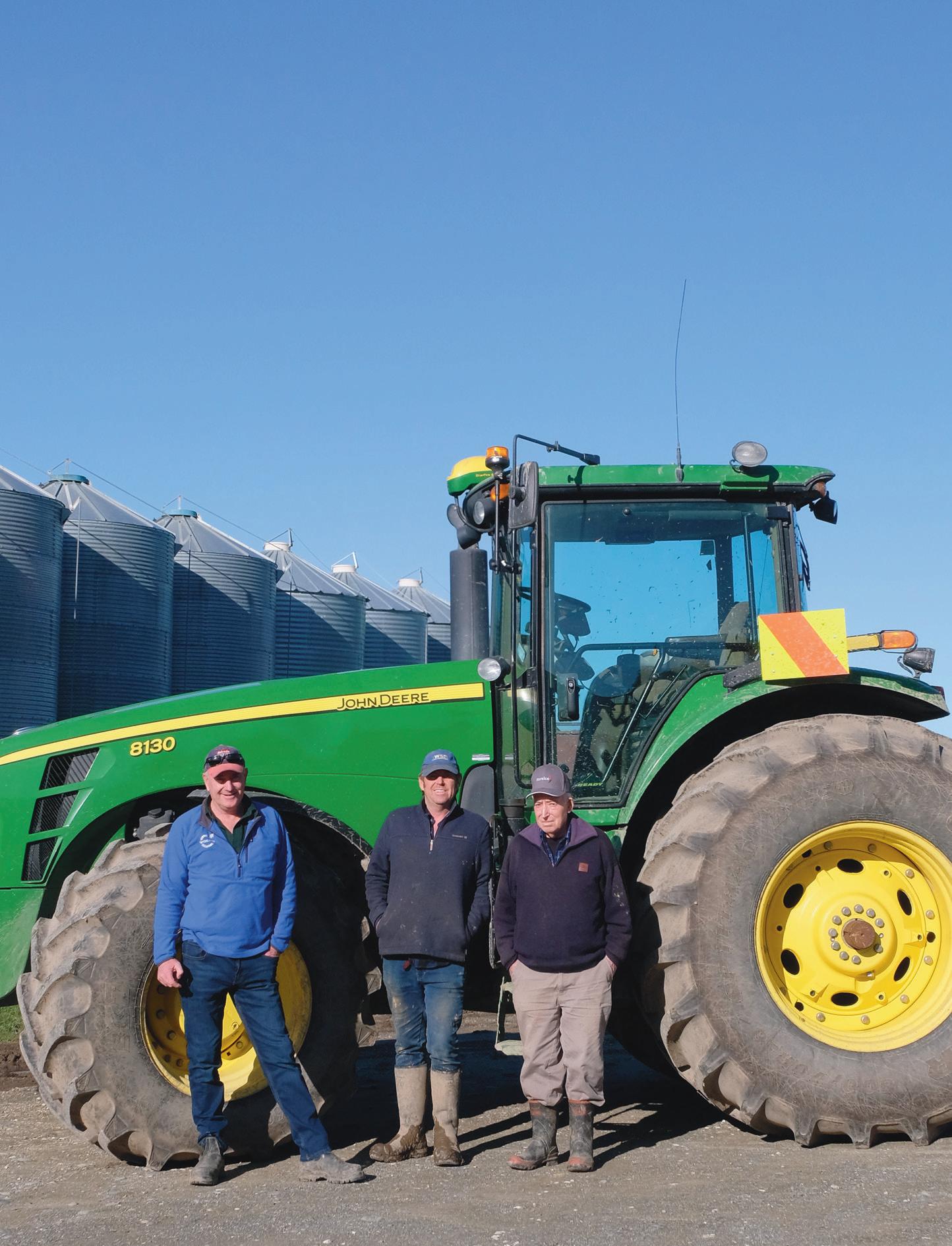
Today it is focused on giving rural businesses the opportunity to source better deals and on delivering real value to local communities, helping to support a sustainable future for New Zealand farming. It prides itself on doing its best on prices, finding answers, sharing its experience and knowledge, connecting people with new ideas, and listening and understanding the needs of real people who make a living from agriculture. And that is exactly what the group of local farmers wanted when they gathered in 1963 and initiated the establishment of the Ashburton Trading Society (ATS), now trading as Ruralco. Their idea was for the Mid Canterbury region to come together to combine their purchasing and lower the cost of running their farming businesses.
Sixty years later, the co-operative continues to grow while upholding the vision of its founding fathers to provide competitive pricing for their businesses and a sustainable future for tomorrow. A group of shareholders, aptly identified as members of the “two-digit plus one club,” reiterated their forebears forward thinking, that while in 60 years Ruralco has grown with the times, it continues to follow that founding vision. They were proud as they came together as active account holders of two-digit shareholder accounts, one even a single digit, to reminisce
and share memories of their families’ 60 years with the co-operative.
The room was buzzing as the early days were recalled and gratitude was expressed of the privilege, bestowed by boards over the years, that allowed the transferring of founding and early shareholder account numbers on through the generations.
The honour of continuing original early member accounts holds value to families.
“It is good that the Board over the years has allowed these early member numbers to be transferred as they really do hold value through family generations and for the co-operative.”
“We are all proud to carry the numbers on and we pay tribute to the Board for being able to maintain them,” single digit account holder Sandra Curd says.
The double-digit number raises a few eyebrows around the suppliers with some not immediately recognising the low number as an early membership. That’s largely because membership has grown to such an extent that the majority of membership numbers are now into four digits.
Amazingly, there are 50 accounts under 100 still alive and active among the more than 4000 shareholder accounts that have accumulated in the 60-year history of the co-operative.
It all started as the Ashburton Trading Society (ATS) in 1963 but who would have thought that from its humble beginnings at a meeting in the private residence of the then Mid Canterbury Federated Farmers president Jack Brand, that 60 years on it would be governed by a Board of Directors charged with setting strategic
directions with a management team running the day-to day-business.
While the scale, governance, management and operations of Ruralco have evolved well beyond any vision of the founding directors, the heart of the early co-operative keeps beating.
The ATS co-operative was formed on August 21 1963 by farmers for farmers with the single focus being to lower input costs through the initial supplier networks.
Predominant industry in the Ashburton County at the time was sheep, beef and arable farming. Founding members Jack Brand, Gilbert Blair, Phil Curd, Alan Franks, Brian Lill, Eric Pilbrow and George Scarth were spread district-wide but they shared a common desire.

These innovative and ambitious farmers were on a mission. They saw a need for the establishment of an organisation that would have the financial interests of farmers at its heart.
As directors they sold their vision and signed up members and it quickly became clear the cooperative meant business. The impact was evident and by early 1964 ATS had reined in 40 members. Bill Taylor recalls attending the first public meeting in October 1963 when the first members were formally approved.
“I was representing the Young Farmers committee; there was 50–60 at the meeting. I remember we had to pay 20 pounds for membership, that was quite significant in those
Ruralco is proud of its heritage, its people, the events and the milestones that have helped shape the cooperative and make it what it is 60 years on from its beginning.BELOW: A group of Ruralco shareholders in the “twodigit plus one club”. From left to right: Spencer Watson, Richard King, Annette Scott, Bill Taylor, Karen Gregory, Wayne Gregory, Jan Clucas, John Stewart, Sandra Curd, Claire Stewart, Errol Stewart
days. I got home and talked to Dad about it and the next morning we decided we would go in and pay this membership. The number we got, while in the first 30, was indicative that there was quite a lot of interest.”
“It wasn’t all sweet sailing, it took quite a while to get it established, farmers were used to dealing with the mercantile firms. There was quite a lot of opposition, hesitancy as to whether it was the right thing to be doing. There was a lot of loyalty to the mercantile firms and stock and station firms.”
“It was clear ATS was having an impact on the mercantile businesses, the undertone was ATS was quite a threat,” Taylor says.
The Taylor family has been farming in the district for 147 years and the fifth generation is becoming involved with the original two-digit membership account.
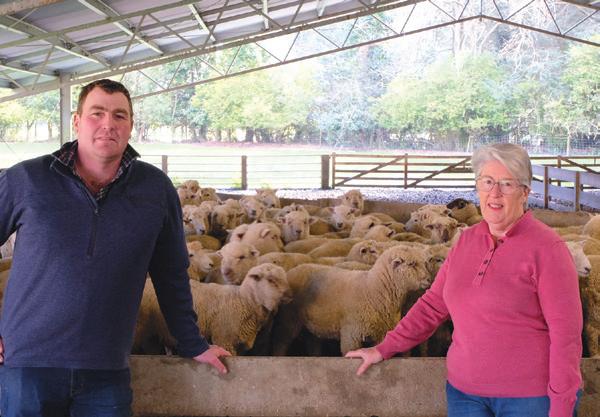
Richard King was farming in partnership with his father at the time the co-operative was established and “herding in members.”
“I remember when it first opened, Dad said to me you better go and buy some posts and wire; I thought we have got plenty of posts and wire, but he said we better help get this business up and running.”
He recalled the early times of ATS operating a simple farm supplies store under the umbrella of Producers Ltd. Chemicals and fencing materials were popular purchases.
“We went into the shop one day and the operations manager Geoff Cranfield announced he was in big trouble. Wilkinson’s Garage had closed down and he had bought the fuel licence. The chairman wasn’t happy.”
“Fortunately, it all worked out in the end and that’s been the best damn thing that ever happened. ATS never looked back because of it and fuel has always been very strong ever since and it still is.”
It wasn’t until the co-operative was set up that farmers discovered the very high mark up on goods.
It is difficult these days to realise how controlled the market was back in the 60s. The manufacturers set the price and retailers who gave a discount would have their supply cut off. As these controls eventually relaxed, particularly the removal of controls on imports, new horizons were created, opening the doors to many important opportunities for the co-operative.
The early directors had very different roles to those of today.
“In those days when it started it was the directors’ job to get out there and get suppliers and drum up members. You went direct to the firms to buy what you needed, there was no shop. The running of the business is very different (now); the directors make decisions at the board table and there’s staff everywhere running all sorts of business, it’s a sign of the times,” Errol Stewart says.
Errol’s son John still has the family’s original membership documents, which were issued within the first 30 memberships, dating back 60 years. The receipt was for the 20 ATS shares, at one pound per share, with the entitlement to membership attached and dated 4 November 1963.
The original membership was for Errol’s father-in-law Clarry Long who, upon retiring from the farm, suggested his daughter Jennifer and her husband Errol Stewart continue with the original membership number for the family farming operation. Sixty years on and the family is still using the same two-digit number which has been handed on down through the generations.
One of the big positives noted was the convenience of paying just one account.
“You got one account per month, paid the bill on the 20th, all done.”
“You could leave home without your wallet, drive all around town, buy all you want, give your number. Times have changed and you need your card now.”
In 1975 ATS secured its 500th member, and membership doubled to 1,000 in 1981.
Producers was the buying group and retail arm of ATS for 10 years from July 1976 to June 1986, through which most of this time the business was stationed on Havelock Street in the Stephenson’s building purchased in October 1977.
In 1986 the Producers Group decided to become part of the CRT (Combined Rural Traders) operation. ATS opted out and rebranded the retail store under North Island business Farmlands with the main purpose being to purchase specific chemical.
At the June 1986 annual meeting members voted to approve an alliance with Farmlands which became the buying group and retail arm of ATS, taking effect in July 1986.
The co-operative purchased the Dalgety building on Burnett Street in 1988 with the retail shop opened at this time.
ATS eventually became independent from Farmlands with the transition taking place in July 1990.
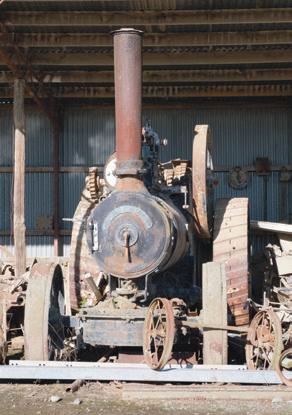
Later CRT was keen to get a hold of the cooperative but that was never entertained.
“CRT desperately wanted ATS, particularly for the chemical side of it. ATS was always a thorn in the side for the mercantile firms with chemical. It may not have been the cheapest but by God it kept prices down.”
“Over the years bids by bigger co-ops like CRT and Farmlands were turned down and rightly so— why join something you don’t know much about when you have something that is working
well, you would lose control of the purpose of the Society in the first place, it’s quite special,” Wayne Gregory says.
The first Instore Days event was held in 1994 and the same year ATS secured its 2,000th member.
The retail shop was extended in 1998 and in 2001 field representatives were introduced to the business, while the same year Saturday trading started at the Ashburton store and a store was opened in Rakaia.
By 2002 membership had reached 2,500 and the following year ATS Methven opened.
ATS Seed was established in 2009 and ATS Energy in 2011.
Ruralco was registered in 2011 but not launched into the marketplace until 2013 as a joint venture with Ravensdown with the ATS card. The intention of Ruralco was to expand the ATS offering nationwide.
The divestment of ATS’s card and Mobil fuel business into Ruralco left the co-operative with the trading divisions of farm supplies, electricity, fertiliser and ATS Seed.
At the South Island Fields Days in March 2017 Ruralco was launched as the customer facing brand replacing ATS.
In 2013 the co-operative celebrated its golden anniversary, and the following year was boasting a membership of 3,500. A new card platform was launched in 2022 ahead of the 60th anniversary celebrated on August 21, 2023.
The past 60 years of agriculture in Canterbury has seen some vast growth, development and technological innovation.
Early members have watched the face of farming change and with it the many changes for Ruralco as it moved on the journey with the farming community. Irrigation played a big part, developing industries and opportunities for the Ashburton District as a whole.
Agribusiness and farming have evolved and forced change with advancements in technology and machinery, stock and seed genetics, environmental compliance, farm audits, health and safety.
Farming over 60 years has been about riding through the hard times and enjoying the good times.
Technology, smart phones, GPS, the mighty power of machines has taken over the six-horse Clydesdale teams.
“The dust has gone, it’s about licence to operate; young farmers want to be out on the farm doing things, not at home in the office smothered in paperwork. The fun (of farming) has been lost.”
While Ruralco has rightly moved on the progressive agriculture journey, all at the gathering of the two-digit plus one group agreed that the original mission statement must never be forgotten.

They noted as quoted:
“Nothing stays the same, but you can’t forget why it started. It has served the co-op and its
five generations of family.”
“It must continue to serve the same while growing to adopt developing technology and science while also adapting to the increasing demand for compliance and environmental regulations that continue to distract from the role of the grassroots food producing farmers.”
“The next 60 years of the co-op – who knows what it will be but one thing for certain is it must never be forgotten why it was started and that farming is the core business.”
“Ruralco must retain its shareholder cooperative and keep farmers on the journey with a strong rural voice around the table.”
The friendly, knowledgeable staff don’t go unnoticed. “That’s one of the most important things, good staffing in the outlets, friendly and helpful, the personal touch goes a long way and the small things count,” the group noted as it concluded, citing the wrapping of Christmas presents as something always appreciated.
“The original ones at the meeting in 1963 would be absolutely thrilled to see us here today and be satisfied with what they started for future generations.”



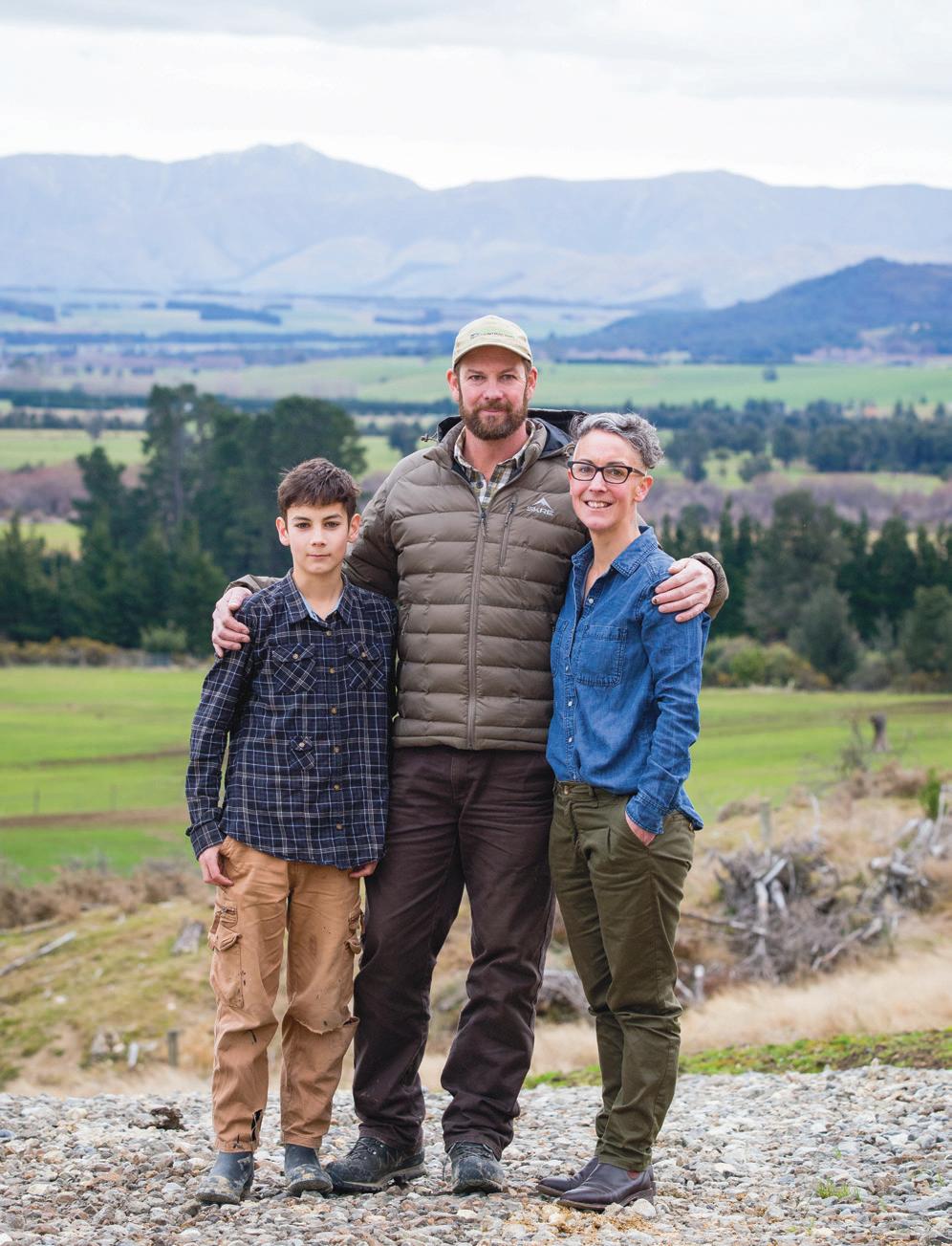
Richard Morris and celebrated artist, welder, and sculptor Hannah Kidd, a strong connection to New Zealand rural life has remained one true constant in both their lives.
WORDS & IMAGES BY ANNIE STUDHOLMERichard Morris has done many things in his life, from contracting to flying helicopters on New Zealand’s West Coast and being a ski instructor at Mt Hutt, but farming has always been in his blood.

Having run his contracting business preparing and seeding new lawns for a decade, Richard has recently taken a step sideways, returning to his and his family’s roots working at Mt Alford Station. “It’s funny how cyclical things are,” he says. Though it’s a challenging time for farmers with rising costs, uncertain global markets, and a wave of government policies threatening the future of sheep and beef farming, Richard says it’s simply not the time to underestimate the importance of food production and how important the agricultural industry is to New Zealand. “Personally, I think food production is really important, and I really wanted to be part of something productive.”
Mt Alford is owned by former ANZCO Foods founder Sir Graeme Harrison, who after 34 years at the helm of the company decided to go into farming with the purchase of the 1580-hectare Mt Alford back in 2015. Bounding both sides of the North Branch of the Ashburton River, Mt Alford boasts fertile, productive flats extending to steeper hill country in the Mt Alford and Pudding Hill ranges. Subsequently, Sir Graeme has added additional land. His total farm area in the Mid Canterbury region now covers more than 2,300 hectares and encompasses properties at Mt Alford, Pudding Hill, and Highbank. Across all the farms, the operation runs a sheep and cattle breeding and finishing operation, running a total of 3,500 Perendale ewes, with plans to increase that number to about 4,000 over the next few years. Annually they calve 550–plus Angus cows, raise more than 1200 cattle including Angus homebred steers for Five Star Beef, and over 5000 lambs.
Sir Graeme is passionate about the environmental work they have completed on the farms. Since purchasing the original property, they realised its limitations, setting areas aside, permanently fencing off more than 350 hectares of indigenous vegetation and wetlands from livestock. They have also planted more than 100 hectares of exotic forestry and indigenous plantings.
With a move to run the properties as one and a focus on reducing the reliance on contractors, a new position was created. As Richard and Hannah had already been renting the homestead at Mt Alford, Richard saw an opportunity. “Partly, I was over planting lawns and looking for something different. Farming is something I have always enjoyed and had an interest in. It happened organically.”
Richard relished returning to his roots after joining the team in February. “It’s quite varied, and I am really enjoying the work. It’s always been part of my roots, and I am happy to be back involved in the industry.”
Richard hails from a long line of farmers. His grandfather, Harold Morris, had a sheep and cropping farm in Winchmore, which was later taken over by his father, John Morris.
ABOVE: Richard Morris has done many things in his life, from flying helicopters to contracting
BELOW: Across all the farms, the operation runs a sheep breeding and finishing operation with a total of 3,500 Perendale ewes

During his tenure on the farm, John was also heavily involved in incorporating the Ashburton Lyndhurst Irrigation Scheme. Initially developed in the late 1940s to provide border dyke irrigation supply to 5/8’s of the land via a gravity-fed open channel system, following the incorporation, farmers subscribed for shares to fund initial business operations such as employing staff, purchasing plant machinery, and funding easements and water supply agreements. They then negotiated an acquisition from the Crown and administration by the Ministry of Works for an irrigation scheme comprising open races. Along with farming, John was also an avid skier and mountaineer, working up at Mt Hutt—a passion Richard also inherited. Richard remembers life was incredibly busy with his father trying to do both, splitting his time between the mountains and the farm. “He struggled with the snow sports/farming cultural divide of the time. That somewhat alienated him in both communities.” At one stage, Richie also recalls him doing a big climbing expedition to the Himalayas in India with the Canterbury Mountaineering Club. John sold the farm in 1995 but didn’t relinquish their original Ruralco account number.
After leaving school, Richard worked with Andrew and Val Jackson of Jackson Holmes Contracting. He operated many different machines there, from being part of the early team involved in the original baling business rising to the role of operations manager.
Having inherited his father’s love for skiing, Richard spent the off seasons working at Mt Hutt. In all, he did 11 winters on the mountain ski instructing, working with the ski-racing and
events like Methven Big Air. He also worked as a snow groomer. There was even a brief period when both Richie and his father worked up there together as ski instructors.
Richard’s other big love was helicopters. “I had always had a long-standing desire to fly helicopters. But my parents had always told me I could do anything except fly helicopters,” he smiles.
While working for the Jacksons, Richard heard the constant thrum of the helicopter blades flying overhead from nearby Mount Hutt Helicopters. So, in 2006, he took the plunge, learning to fly and moving the family to the West Coast for a job with James Scott of HeliServices. NZ. He spent the next seven years flying hunters, doing scenic tours, and Department of Conservation (DOC) work.
Though he loved the work, the family yearned to return to Canterbury. “I loved the West Coast. Both our children were born there. Franz Joseph is stunning, but it’s isolated and unforgiving. I never really felt like I belonged there,” says Hannah. On settling back in Methven, Richard started his own business, Morris Contracting preparing and seeding new lawns and green spaces for new sub-divisions, reworking old lawns, lifestyle block pastures, preparation and levelling, stone burring, post establishment rolling and fertiliser application. He’s been doing that for the past decade.
Richard and Hannah have recently purchased their own piece of paradise on the hill above Alford Forest, which they are developing. Sheds have already been built, with Hannah’s very own workshop next on the list to be completed. The property includes some remnant native forest and is planted with pine trees.
Though Richard has never farmed in his own right, he has remained strongly linked to agriculture throughout his career and puts a lot of value on his Ruralco account number. It remains one of the very few account numbers that had been retained by the same family throughout.
Richard’s grandfather, Harold Morris, was responsible for taking out the Morris’s first


account with the newly formed Ashburton Trading Society (now Ruralco). Started in 1963 by a group of farmers after competitive pricing for their businesses and a sustainable future for tomorrow, Harold was one of the first 50 farmers to sign up. And it has remained in the family ever since. Sadly, Richard’s father passed away from Leukaemia in 2000. His mother had retained the number until recently when Richard took it over due to her ill health. “My father had held that account number for a long time. It was really important for me to keep that number. It’s not only an incredibly easy one to remember, but it’s that one connection I have to my father and the farm. It ties us back to the region in a way.”
It was also incredibly special to think that our family had been involved with the co-op since its early infancy and still was 60 years on. And as for what the co-op means to him, “Currently, it is the warm, friendly greeting I get in the Methven store and the first name basis with the staff. They are my go-to for pipe fittings I need every time I get on the digger at our block. The staff always joke with me if I would like some pipe fittings with the dog food I might be buying at the time.”
Richard is also a volunteer for the local Alford Forest Fire Brigade, having previously been one while in Franz Joseph. He is also a keen mountain biker along with the whole family. He’s been a Bike Methven committee member and has volunteered many days on track maintenance and events.
Perhaps ironically, Sir Graeme was a co-owner of the land the Mt Hutt Bike Park sits on, along with The
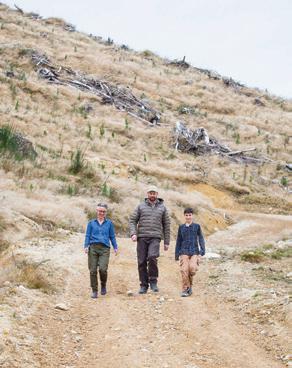
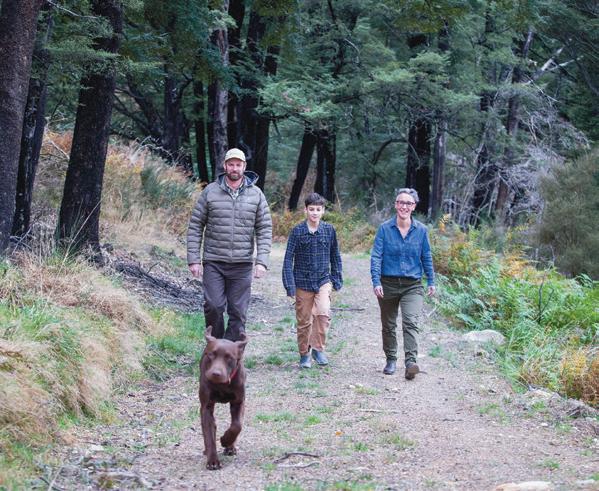
Bike Methven Club and 11 other shareholders. Sir Graeme later bought out the other 10 shareholders to keep this area as the great community asset it has become. It was through the bike park that they first met.
Artist Hannah Kidd’s remarkable sculptures have an unmistakable rural feel. Using that most rural of materials, corrugated iron, her work embodies the spirit of rural New Zealand, with its working dogs, farm animals, wild animals and native birds to lifesize farmers, All Blacks heroes with lamps on
their heads, ice creams in a cone and huge lit up Kiwi slogans.
Originally from Christchurch, Hannah followed her older sister, Lauren, to Dunedin, studying at the Otago Polytechnic School of Art. She graduated in 2001 with a Bachelor of Fine Arts, majoring in sculpture.
While most of her classmates went into teaching, Hannah knew she wanted to be a practising artist from the outset. Having met Richard in 1999, she moved to Methven after graduating. Initially, she worked out of the garage at home before setting up her first proper workshop and has never looked back. Quickly gaining critical acclaim, her distinctive works have been exhibited worldwide.
Although skilled in bronze casting, Hannah found herself drawn to making “big stuff”, and for that, she needed to know how to weld. She first picked up a welder at South Pacific Seeds welding cabbage stakes before going to work for Don Johnson at Methven Engineering. “Don really taught me how to weld properly.”

Hannah started welding the framework and using a lot of fibreglass. Still, it didn’t give her the effect she was after, so she started experimenting with chicken wire and anything else she found lying around. After first trying tin, she turned her attention to using corrugated iron. Not only was corrugated iron easy to source, but it was cheap, and she knew it would last.
She now uses those skills to create delightful life-sized (or larger) sculptures from steel rods and corrugated iron as a means to investigate people and the relationships they have with their surrounding environment. They provide a fascinating commentary on New Zealand’s rural life and reflect the prevailing attitudes in rural towns. Hannah jokes that she should have been a farmer. “I love a good A&P show,” she smiles. “We have strong rural connections without being in it. We are part of it, but we’re not. I just love all the personalities and the dynamics between them.”
Perhaps surprisingly, Hannah’s sculptures are created mainly on the fly. She does not painstakingly sketch out the pieces or work from maquettes but instead constructs the pieces entirely by eye, building the beasts as she goes. “It’s a two-step process,” she explains. Having first imagined it in her head, Hannah finds as
many images as possible of the subject and then, using chalk on a tin bench begins to draw a silhouetted outline. Using this two-dimensional outline, she works upwards, cutting and bending the steel rod into a three-dimensional frame, welding the many pieces together.
The object is then clad in welded corrugated iron, often flattened out previously, by driving over the iron with a heavy roller on a friend’s farm. Sometimes the iron is left raw, rustic, unpainted, or painted in acrylic or enamel paint. Possibly even lighting is added. Hannah never tries to conceal the materials she uses to make her pieces. The nuts and bolts, joins, and scars of the works all add to the finished objects, helping bring them to life. Each one takes her and her assistant, Sue Bamford, hours to draw, raw, cut, bend, weld, attach and sometimes paint her creations into existence. Her art isn’t all welding irons and bolt cutters, though. Recently Hannah has been exploring her love of ceramics and tapestry. “I have always been interested in ceramics but hadn’t really had the time. I find it very therapeutic. I make it up as I go along.”
While the urn shapes are relatively traditional, her subjects are anything but. The colourful designs feature everything from Vladimir Putin on horseback to Instagram cats, pink flamingoes, cows, chickens and social media messages
BELOW: Much of the artwork Hannah sculpts is influenced by her rural lifestyle and ties to agriculture
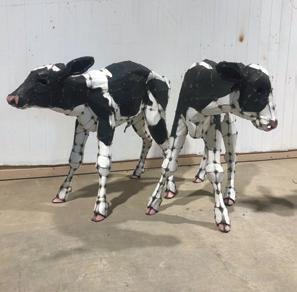

about missing dogs to racecourse stands. Each urn is exhibited on its own tin stand in reference to her trademark style.
Ceramics was something Hannah had been able to do with the children, whereas welding wasn’t exactly child-friendly. She runs a Clay Club in the old Mountain Gym in Methven every Friday, open to anyone, young and old, interested in giving it a go. In the future, she hopes to build her own kiln.
Hannah’s other passion is tapestry. For more than a decade, she has painstakingly collected quintessentially English tapestries from secondhand stores, repurposing them in her home studio into amazing bags and cushions. The tapestries Hannah selects feature scenes of horse-drawn sleighs, ribbon-bedecked ladies, and rolling green-gold landscapes.
Nowadays, much of her time is devoted to commissions, with her work also sold in galleries. She has just one exhibition a year.
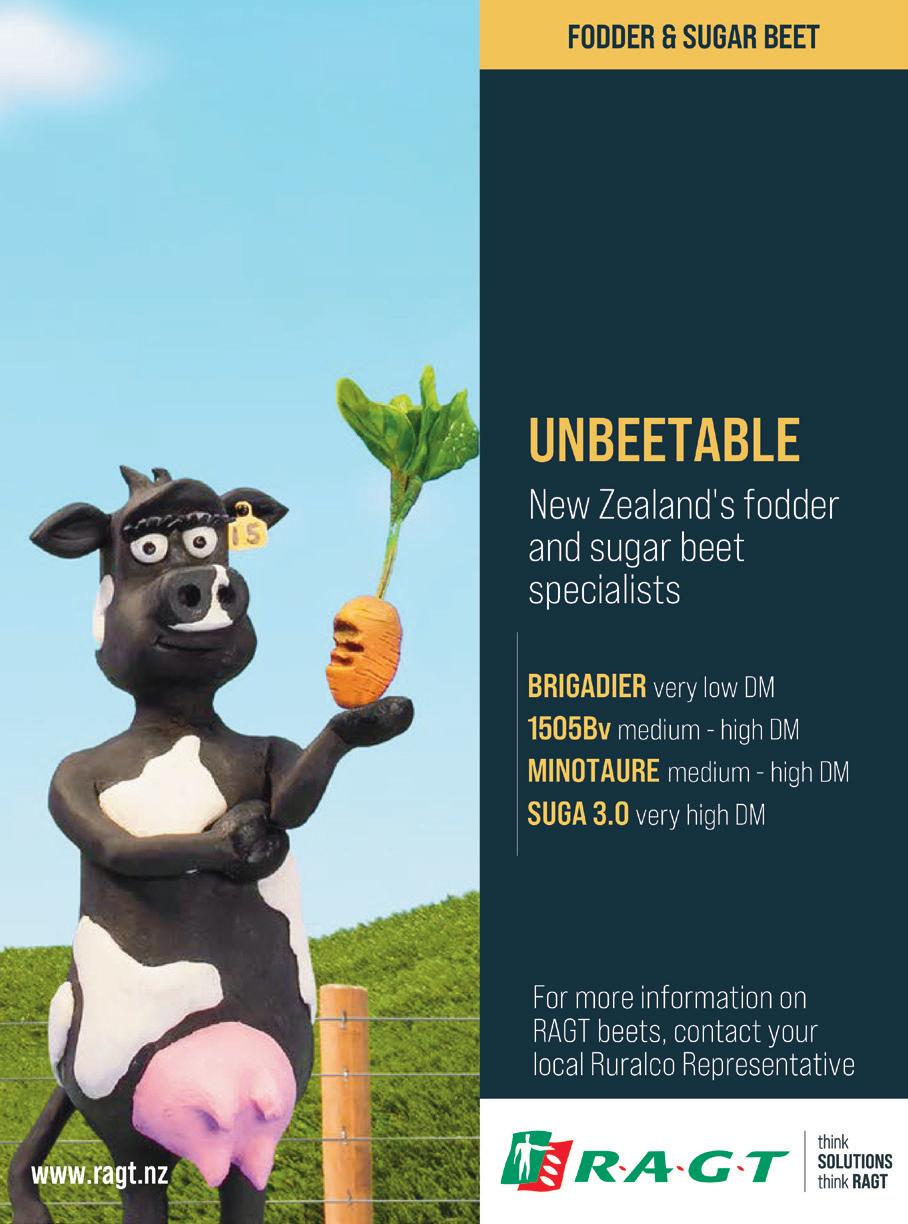
Fodder beet remains a staple option in our new operating environment, where there is a focus on land use and nutrient losses. It is a flexible low-nitrogen crop that can meet regulatory requirements, while offering high yields and serving as a low-cost, high-energy feed with performance advantages for animals.
SUGA 3.0:
Superior genetics for farmers wanting the maximum flexibility and returns from their beet system. Selected for New Zealand conditions and bred specifically for mechanical harvesting, SUGA helps ensure optimum harvestable yields. With very high dry matter bulbs, this cultivar ensures long-term storability, a key component. It’s high energy content makes it an ideal, costeffective feed solution, suitable for all types of livestock throughout the year.
When planting RAGT beet this season, follow these tips for optimum results:
• Choose paddocks with a suitable history, optimal nutrient availability, and that can be prepared to an acceptable standard.
• Remember that activities before seedling emergence determine up to two thirds of the total crop yield.
• Check for subsoil restrictions that could hinder root development.
• Allow for an adequate fallow period to build up moisture and tackle weeds early.
• Ensure key nutrients are not limiting for plant emergence and growth.
• Create a fine, firm, and moist seedbed without over cultivation or compaction.
• Use a precision planter at a slow speed, considering environmental risks.
• Plant the appropriate rate for optimal field emergence based on beet type, line germination, and crop end use.
This season, RAGT will continue to offer a full range of high-performance fodder and sugar beet genetics across all key categories to the New Zealand market. Each of our four types of beet has slightly different characteristics to suit different farm systems and feed needs, so there’s a solution for everyone. To choose the right cultivar consider; what stock class it’s for, if it will be grazed in-situ, self-harvest or mechanically harvested, and whether it’s for maintenance feed or animal production.
BRIGADIER:
A firm favourite throughout New Zealand. With a soft bulb that sits much higher out of the soil compared to other forms of fodder beet, it is exceptionally well-suited to in-situ grazing, particularly for young livestock. Its low dry matter percentage further enhances utilisation rates, guaranteeing higher levels of consumption. Brigadier also has the ability to retain good levels of quality leaf into the cooler months helping benefit these systems further.
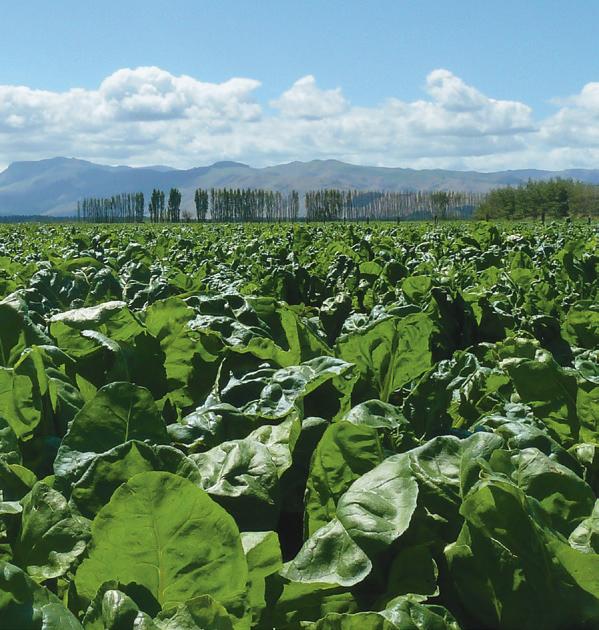
1505BV:
A proven and excellent choice for a range of farm systems, delivering impressive results with its medium to high dry matter percentage and subsequently very high yields. Its above ground bulb proportion and consistent bulb size make it particularly well suited to intensive grazing systems, especially dairy. An added benefit of easy self-harvesting using beet buckets enhances its versatility, providing a high-quality feed option from autumn through to spring.
1505Bv boasts exceptional leaf retention and quality too, providing a valuable protein source, contributing nearly a quarter of its total yield.
Offering exceptional versatility across a diverse range of systems, Minotaure seamlessly adapts whether it be for in-situ grazing or full mechanical harvesting, ensuring impressive results in the field. With its robust structure and uniform bulb size, this medium to high dry matter percentage variety delivers exceptional yields.
• Apply post-planting / pre-emergence herbicides and insecticides to minimise weed competition and insect damage during germination.
• Time input applications correctly for effective weed and pest control and optimal crop growth.
• Apply post-planting fertiliser to minimise bare ground exposure and promote canopy closure.
• A rapidly growing canopy with good ground cover can exploit sunshine hours and drive yield.
• Use registered fungicides to retain crop green leaf, ensuring proper timing and adherence to grazing withholding periods.
When grown optimally, beet offers high yields and serves as a cost-effective, high-energy feed with performance advantages for animals.
For more information on RAGT beets, contact your local Ruralco representative.
THIS PROMOTIONAL FEATURE WAS PROVIDED BY RAGT

RutsPlus’s Pivot Rut Filling machines penetrate through the grass and soil cutting out the sidewalls of the pivot rut, pulling in sods of the already established grass root structure and planting it back into the pivot rut. The farmer then follows behind, wheel packing the windrowed material with their own tractor. This method leaves no depressions or bare grass on either side of the wheel track, all without bringing in extra material. Condensed root structure increases the soil’s weight holding capacity. Once compacted, it then combines to create a solid mass. The grass continues growing and will no longer hold water as it did before. This can be achieved even when irrigating.
As farmers themselves, the team at RutsPlus.com understand the value of seeing results firsthand. Over the years they’ve had plenty of farmers willing to let them trial their innovations on farm, ensuring the machines deliver excellent results. They now offer free on-farm demonstrations across Canterbury and North Otago.

Since starting RutsPlus in 2021, they have filled in well over 1,000km of pivot ruts. In 2022, the business expanded their contracting operations to include retrieving material from under dairy lane fences, a service that is quickly becoming sought after.

Filling in pivot ruts and retrieving material from under dairy lane fences has never been easier with Ruralco supplier RutsPlus.com. Their purposebuilt equipment has led them to take Runner Up in the Agri Innovation awards at the 2023 South Island Agricultural Field Days and takes the efficiency of filling ruts to the next level. RutsPlus first began developing their multi-task machines in 2017.
Owner Rodger Smaill said, “there was a need to design a faster, better and more cost effective way of doing the job than was currently available”. They now hold a fleet of six machines which are available year-round. Each has its own custommade trailer and is transported and towed by the latest Suzuki Jimnys, enabling the RutsPlus
team to keeps costs at a minimum and efficiency at a maximum. With their equipment, jobs work out to be about 90% cheaper, quicker, and more effective than traditional methods.
Retrieving material from under dairy lane fences is achieved using the most efficient way possible, either windrowing the material into the lane or simply spreading it out. Normally farmers will use their frontend loader scooping up the material into their own dump trailer. RutsPlus.com have the most advanced blade system available, allowing further reach under the fence wire as well as the ability to deflect around the posts. They can cover as much as 2km of fence line per hour. For more information or for demonstration videos, visit www.rutsplus.com
THIS PROMOTIONAL FEATURE WAS PROVIDED BY RUTSPLUS

Many older farmers today will well recall the anger and frustration expressed by many New Zealanders in the early sixties when the United Kingdom announced its decision to enter the European Economic Community (EEC), a precursor to today’s EU.
 WORDS BY RICHARD RENNIE
WORDS BY RICHARD RENNIE
It signified a parting of the traditional ways between the “mother country” and its colonial offspring, and with it a slide from about 60% of this country’s export produce sold there to only about a third by the time Britain entered in the early seventies.
Fast forward 30-plus years, and New Zealand’s dependence upon a single major trading partner has well replaced United Kingdom with China,
with that country accounting for over 30% of export income in 2022.
The Chinese appetite for sheep meat and milk powder in particular grew almost from the initial signing of the Free Trade Agreement in 2008. It also came at a time when other markets, particularly for lower value meats were looking particularly vulnerable.
It bought higher value earnings for large volumes of traditionally low value cuts like flaps and shanks in the sheep meat trade and has done much to maintain and boost income for sheep farmers in the past 10-12 years after dire declines in profitability.
But since the FTA with China was signed in 2008, global geopolitics have shifted with China’s rise in power causing tensions with United States, and
risking having New Zealand fall into dangerous ground between the two.
It’s a risk NZ has stepped delicately and expertly around over the past few years, with tacit acknowledgement in diplomatic circles that should a dreaded standoff occur between USA and China, NZ will inevitably have to take a side.
A year ago, then PM Jacinda Ardern noted China’s increasing assertiveness and willingness to challenge international rules, comments the Chinese promptly said were unhelpful and “regrettable.”
This all makes the past few years of behindthe-scenes diplomatic efforts to secure more free trade agreements all the more timely, as New Zealand has worked to tie down some valuable agreements with emerging developing nations in South-East Asia, and well-developed one-time trade foes, in the European Union.
The signing of the NZ-UK FTA renews those traditional ties with the mother country that cut NZ loose all those years ago.
The Ukraine war has sharpened minds throughout Europe about trade relationships for food security, and in for the United Kingdom it is also buoyed by its need to carve new relationships in its new post-EU world.
In the case of developing South-East Asian countries, the emergence of wealthier middle classes seeking quality protein as they shift from a high carbohydrate grains-based diet to a more traditional Western profile presents new opportunities through the free trade agreements that have been forged.
After the Trump presidency scuttled the TransPacific Partnership deal, the Comprehensive and Progressive Agreement for Trans-Pacific Partnership (CPTPP) rose from the ashes, backed by 11 nations including New Zealand and sanctioned in 2018.
It eliminates tariffs between Australia, Canda, Japan, Mexico, Singapore and Vietnam with Brunei, Chile, Peru, and Malaysia also now on board. Alongside it, in another rash of acronyms, the Regional Comprehensive Economic Partnership
(RCEP), was signed in late 2020 and effective from last January.
The RCEP encompasses a third of the world’s population, including seven of New Zealand’s top 10 trade partners.
Countries include Vietnam, Thailand, Laos Cambodia, Malaysia and Indonesia, alongside traditional trade partners China, Japan, and South Korea.
Between them these agreements hold some exciting potential for New Zealand primary producers wanting to diversify their market portfolio and maintain value for their products.
Veteran trade negotiator Stephen Jacobi says the time is ripe for Kiwi primary produce exporters to consider their opportunities in these markets.
NZ is already enjoying an uptick in trade with Indonesia, with exports to the year ended June 2022 up 21% and totalling $1.63 billion putting the populous island state at ninth in export value.
He says opportunities in markets like Indonesia are not about “China minus”, but more about “Chinaplus”. They provide exporters with a valuable way to de-risk any undue reliance upon China, whilst still remaining relatively close to home.
For a country that only has the ability to feed 25–30 million people in the world, the population figures for such markets are dizzying. Indonesia alone is a market of over quarter of a billion people.
But the ability to expand the portfolio of tariff free, or lower tariff markets can also help primary exporters balance out the inevitable challenges that go with selling seasonal products, particularly those sourced from livestock.
The traditionally high value markets of the European Union for high value cuts of chilled sheep meat are well recognised and appreciated. The EU and UK account for about 50% of New Zealand’s high value chilled lamb trade, with China accounting for less than one percent. However, the Chinese market has come to help provide a balancing market as a source for the lower value cuts in frozen form. Such opportunities can also be developed in other South-East Asian markets with the advent of the trade agreements.
As markets like this open up and become wealthier, the FTA between New Zealand and the EU opens up, with an additional 38,000t a year of sheep meat, with zero tariff seven years after signing.
Similarly, the UK FTA moves from allowing 35,000t a year of sheep meat to year four after signing, jumping to 50,000t a year after that with zero tariff by year 16.
Beef is also a winner with the yearly quota jumping from 3300t to 10,000t a year in seven years, with 7% tariff.
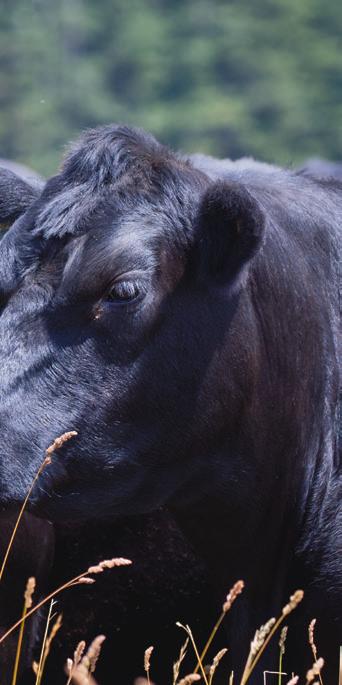
At present New Zealand is only exporting about 1200t a year of beef to the EU, but thanks
to a well-established chilled lamb trade the infrastructure and skills are well developed to push that further to an aging market seeking quality, low fat, high protein meat cuts suited to smaller households.
MPI director Ray Smith labelled the United Kingdom as an opportunity more exporters needed to recognise, one often dismissed on grounds it was a market that was simply too hard and too distant to deal with, often complicated by its ties to the EU.
He said a good target would be to get the UK to 10% of export value in coming years to “even up the trade ledger a bit.”
At present the UK separate to the EU accounts for only 2% of export trade.
South Korea provides an example of how New Zealand primary producers are starting to see benefits from FTAs and broaden their portfolio.
Signed back in 2015, the agreement contained progressive rollbacks of some of the world’s most punishing tariffs so that by 2030 all products will be tariff free.
Prior to the FTA, kiwifruit growers faced a whopping 45% tariff that was estimated to cost every grower about $4000 a year. Today the fruit is touching 800,000 trays a year of export sales with a trajectory that could see Zespri being the largest fruit company in South Korea by 2027, surpassing even US giant Dole as sales continue to surge.
South Korea provides a signal to what other developing South-East Asian markets could mean for New Zealand food producers as diets shift and aging demographics kick in.
Last year was the first year in South Korea annual per capita consumption of rice at 53kg was exceeded by meat consumption, at 55kg with protein pushing firmly ahead of carbohydrates in the national diet.
In an aging population where over 65’s are focusing on aging well, dairy is finding its footing as a valuable protein supplement ingredient in drinks and foods.
After totalling $210 million in exports in 2015 today dairy amounts to $350 million, surging 64% in only five years with continuing strong growth prospects in a high value ingredients market.
An opportunity also exists for high quality chilled red meat exports to a market seeking a lean, low-fat option in a market dominated by heavily marbled, grain fed US and Australian beef. Post covid it has been dairy, kiwifruit, and meat that have pushed the market’s export value to $2.8 billion in year ended June 2022.
While China will continue to dominate New Zealand’s primary exports for years to come, New Zealand’s proximity to many other growing Asian markets with free trade provide a good balance to agreements also now in play with their wealthier, established European and UK counterparts.





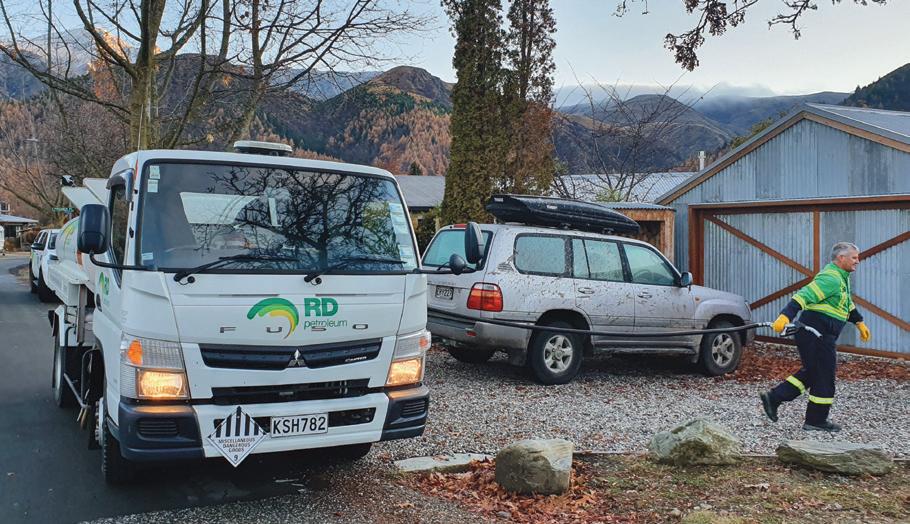
RD Petroleum (RDP) is a familiar sight for rural New Zealanders, supplying bulk fuel and having self-service petrol stations dotted throughout the South Island, but did you know urban residents are now also enjoying the same excellent customer service for which RDP is known for, through its home heating diesel?
RDP began its home heating diesel delivery service in Christchurch, Ashburton, Timaru, Dunedin and Invercargill a number of years ago. Increased demand and competitively priced home heating diesel has seen that reach expanded into the Central Lakes District as well as the upper South Island in Nelson and Marlborough.
Customer demand has continued to increase year upon year, with diesel boilers continuing to be a popular home heating option for both radiator and under floor systems. RDP has responded to this demand with specialised improvements to its delivery equipment, including specialist mini tankers that deliver home heating diesel.
Home heating diesel tanks have an average capacity of approximately 500 litres, while commercial tanks can be much larger. To avoid taking unnecessary risks when it’s time to
top-up your fuel, RDP has ensured all safety considerations, for both people and the environment, with mini tankers ticking all the boxes to refuel domestic and commercial tanks quickly, safely and cost-effectively.
The home heating diesel delivery trucks in each urban centre are drawn from the company’s extensive vehicle fleet. This means they have the latest communication and GPS tracking technology on board, so the operations team always know where they are and how far away they are from their next delivery stop.
RDP’s home heating diesel trucks also come equipped with a specially designed hose, through which the diesel is pumped from the truck into house tanks. The length of the hose allows the trucks to access tanks without having to enter the property, avoiding the risk of any damage to your driveway.
Ordering home heating diesel has also been made easier through the RD Petroleum app which can be used for home heating diesel or bulk fuel. It’s available on iPhone and Android and can be easily downloaded to make ordering your fuel simpler than ever.
RDP markets and distributes bulk fuel, lubricant and petroleum products, specialising in the fuel supply to commercial, rural agricultural, aviation and residential sectors. The business
is a Joint Venture Distributor with BP NZ (49%) and Wilson Holdings Dunedin (51%) and is the only distributor in New Zealand with oil company ownership, giving it a massive advantage in the marketplace in regard to certainty of fuel supply. With innovative storage facilities it operates tankers 24/7, including a large modern fleet across the South Island. A team of highly experienced staff, including its own in-house engineering division, and leading-edge technology, RDP provides a delivery service that is second-to-none.
RDP’s centralised dispatch and scheduling team have a real-time overview of the tanker fleet. This ensures fuel requests can be fulfilled within 2–3 working days. Match this with an up-to-date database of client orders and RDP provides the highest level of customer service. Maximum utilisation of the fleet means RDP is one of the most cost-effective fuel distributors in the business.
RDP is the place to go if you require diesel conveniently delivered to your home and as a loyal RDP customer, you’re offered discounted pricing and can become eligible for value-added benefits. All this means savings on your home heating costs.
A visit from South Dakota State University students to Mid Canterbury farms is a win-win.

WORDS & IMAGES BY ANNIE STUDHOLME
For more than a decade, students from South Dakota State University (SDSU) studying a wide variety of academic programmes such as agricultural business, animal science, horticulture, agronomy, dairy production, and pre-veterinary medicine, have been visiting New Zealand farms to gain a comprehensive overview of our agriculture.
Hewson Farms and Align Farms were the last two stops on a jam-packed, whistle-stop tour of some of New Zealand’s leading primary producers, manufacturers, and decisionmakers across both islands.
Designed to give students a first-hand education on different agricultural practices, sustainable
food production, preservation of native habitats, soil and water resources on farms, efficient pasture-based food production and issues facing the primary sector, the tour visited growers of potatoes, kiwifruit, and cherries, as well as sheep and beef farms, cropping and dairy farms, and stops at High Country Salmon and the Temuka Sales Complex.
For those farmers opening their doors, it provides a unique opportunity to share their stories and give back and learn from potential consumers through thoughtful questioning and insightful discussion.
Welcoming a group of American university students on-farm was a new experience for Hewson Farms. “It’s nice to be able to give something back to the next generation coming through by showing them how we farm on the Canterbury Plains and what we are doing here in New Zealand,” says Sarah Hewson.
Sarah’s father, Ross Hewson, gave the students an overview of the farm. The family-run operation farms 2,430 hectares at Chertsey/ Pendarves. Ross is a third-generation arable, sheep and beef farmer. He farmed in partnership with his brother, David, in South Canterbury until 2000 before moving to Mid Canterbury to expand his arable and vegetable business.
Having farmed heavy clay dry land soils, Ross and wife Rochelle moved to Pendarves mainly to farm light, irrigated soils that offered an ideal medium for processed crops such as potatoes. The light Lismore and Chertsey silts were also more tolerant of the heavier equipment used to harvest potatoes and onions.
They started with just 370 hectares. Today, the Hewsons have expanded their land and arable production to more than 2,400 hectares. The farm is irrigated by 30 central pivot and lateral
irrigators with four guns for the dryland corners. Water is extracted from 13 underground bores, all over 150m, supplemented by water from Action and BCI irrigation schemes.
Crops grown include wheat, barley, ryegrass, clover, hybrid beetroot, hybrid rape, kale, linseed, and peas. On the vegetable side, they grow carrots for seed which goes to Europe, and potatoes and onions for the domestic and export markets.
Over winter, they also finish approximately 12–14,000 lambs annually, mostly on oat cover crops, to protect and improve soil health for potatoes and onions. Incorporating sheep in arable rotations has many benefits, including controlling the early grazing of spring growth in ryegrass and clover crops and providing nutritious feed for sheep.
Aside from Ross and Rochelle and children
Sarah and Joel (Operations Manager), Hewson Farms have 20 full-time equivalent employees, including Farm Manager Andrew Scott, as well as an experienced stock manager, logistics manager, office staff, seven full-time employees plus additional mechanics/engineers and truck drivers depending on the time of the year. They also have four part-time retired farmers who help when required. During potato and onion harvest, they also hire seasonal workers from the UK, Holland, Scotland, Ireland and the rest, mostly from Vanuatu, which they usually get through the Recognised Seasonal Employer (RSE) Scheme.
From the outset, Ross has always been proactive, working to implement best practice on-farm management techniques. He pays particular attention to site and crop rotation, seedbed preparation, disease control and harvesting. His focus is on having minimal negative impact on the environment in which they live.
Crop rotations are done one to two years before they are in the ground. Grass seed and wheat are important break crops. Due to the high risk of disease, seed carrots are grown on a
one-in-every-10-year rotation, potatoes once every eight years and onions once every five years or more.
“It is also pleasing to note that current onfarm practices and sustainable crop rotations fit nicely into the eight pillars being promoted for regenerative agriculture around the world. New Zealand arable farms have a wide variety of crops and include livestock to control cover crops and excess spring vegetation growth in ryegrass crops.”
Sarah says where possible, they are using the latest IT to increase economic and environmental benefits, as well improving traceability. Programs such as Trimble’s ag technology have made a huge difference. Its simplified workflows keep us up-to-date with what’s going on, increasing productivity and efficiency. By using Precision Ag, they were also ensuring each part of the paddock only got
what it required rather than applying a blanket application.
“Our philosophy is to try and keep everything as simple and practical as we can; recording and collating all the data is essential in today’s farming environment. We record everything, so we can use data to make informed onfarm decisions. We know the requirement for each crop and the critical uptake times, so we plan our applications around that. Timing is everything,” she says.
The next day students visited Align Farms’ Clareview Farm, which borders the Ashburton River. Align Farms is no stranger to having groups on farm. CEO Rhys Roberts relishes the chance to share what they’re doing. “I’m always interested to see what young, bright consumers worldwide think. It’s an opportunity to talk to different people with a different perspective. I always really enjoy that. Typically the same questions come up, but you generally always learn something. Something always comes out of these visits,” he says.
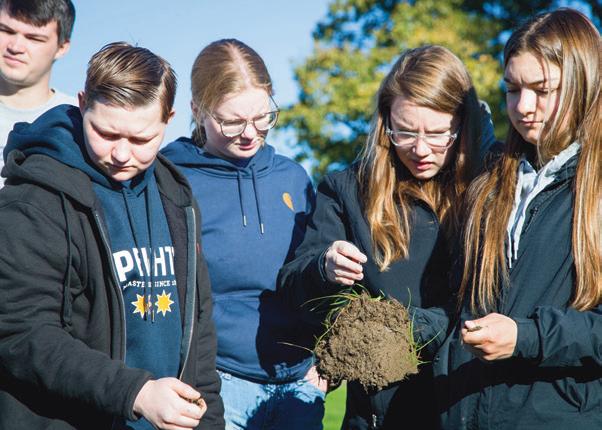
Rhys first gave the students a quick rundown of the history of Align Farms and the farming operation. Founded by John Buchanan and Rob Cameron in 2012, Align was started with a clear vision to create a multigenerational, pasture to plate, food production business with better balance for their staff, farm and the environment.
Today, it includes six dairy farms, each with its own manager, and four dairy support properties between the Rangitata and Ashburton Rivers. The dairy farms collectively cover 2,200 hectares and are home to more than 5,000 cows, producing more than 2.2 million milk solids each year. In addition, Align Farms
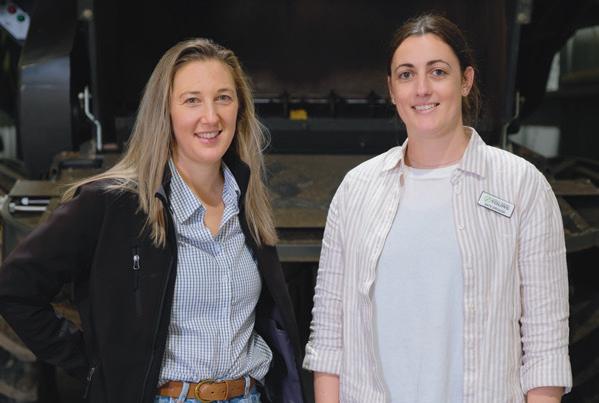
also owns yoghurt brand ‘Cyclops’ and a milk processing facility.
Rhys has been with the company since the beginning, initially as the Operations Manager before progressing to the CEO role. He and wife, Kiri, who manages Align Clareview, had previously been share milkers overseas before returning to New Zealand.
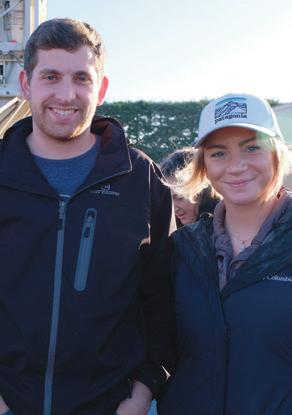
As the students had visited dairy farms in the North Island, Rhys was keen to point out how different it was milking cows on the Canterbury Plains. “The key difference between the North and South Islands is the weather. It’s much cooler in the winter and dryer in the summer. We rely heavily on irrigation in Mid Canterbury. We apply water anywhere from 60 to 120 days, depending on the season.”
A unique strength of the area is its ability to produce consistent feed, partly due to its freedraining soil. But with more and more cows, environmental issues are appearing, which is a problem for our community and us as farmers, says Rhys.
“We need to ensure that what we are doing onfarm does not affect our community. We don’t want to be sitting around the board table in 10 years’ time and have completely lost our social licence to farm.”
With ‘regenerative’ farming all the rage in farming and food circles, he explained that four years ago, Align Farms embarked on a regenerative trial, effectively splitting Align Clareview in half (148 hectares each) running on conventionally and one with regen practices with two herds, two milk vats, and two sets of data across five key areas; financial, environmental, animal health, milk quality and social impact.
Rhys says they aimed to get some hard data behind regenerative farming rather than relying on ‘fairies and sparkles’. It was about discovering what works and what doesn’t and
sharing that information with the farming community to help shape a commercially successful version of regen practices. There have been many learnings along the way. Perhaps the biggest lesson so far has been in pasture management. Right from the outset, the regenerative area hasn’t received any Urea or synthetic nitrogen fertiliser. At the start, most of the regenerative paddocks were sown in set-up crops that included a diverse range of about 20 plant species, including sunflowers, grains, legumes, grasses, brassicas and herbs. Over time though, this has been whittled down to about seven functionally diverse species. These include ryegrass, fescue, cocksfoot, Persian clover, large and small-leafed white clovers, red clover, chicory and plantain. While the regen pastures outperformed the conventionally managed ryegrass and white clover in total dry matter, they struggled to get that to translate to milk production. Pasture quality was also an issue, with the hard and fast minimum 30-day round idea not ringing true. There needs to be flexibility in the grazing with

a focus on quality. Wastage had also been a problem.
Rhys says nutrient and GHG emission loss reductions have been significant, though. Align Farms was working with Landcare Research on carbon accounting for three properties over the next five years. It was also assessing soil microbe populations and ratios using Soil Food Web and carried out Visual Soil Assessments regularly. Align Farms is also committed to improving the health of its team. While they had always supplied meat and milk, about two years ago, they took it a step further, introducing chickens to provide eggs and creating a massive vegetable garden at Clareview. They aimed to supply their team with about 60 per cent of their diet from the farm. Managed by Liz Phillips, Kiri’s mum, the market garden now provides about 40 delicious, fresh, spray-free
vegetable boxes to staff each week, with any leftovers sold locally.
This was the perfect way for the students to finish their New Zealand agricultural experience, ending SDSU’s fifth visit.
A university group first visited New Zealand in 2013. Led by Dr Julie Walker, professor and SDSU Extension Beef Specialist, the students spend a semester preparing for their visit through discussions and class presentations based on current New Zealand agriculture news articles and relevant topics.

Founded in 1881 in Brookings, South Dakota, South Dakota State University (SDSU) has a rich agricultural legacy, originally formed as an Agricultural College. It is the largest and secondoldest higher learning institution in the state. SDSU is separated into six colleges specialising academically in Agriculture, Arts & Sciences, Education, Engineering, Nursing, and Pharmacy. Students can choose from 86 majors, 38 specialisations, 102 minors, 39 master’s degree programs, 16 Ph.D. programs and two professional doctorates. It includes more than a dozen four-year agricultural-focused undergraduate degrees, including America’s first Bachelor of Precision Agriculture and leading the way in agricultural research.
Last year it also opened the US$46 million Raven Precision Agriculture Centre, where students, staff and faculty have the opportunity to think and work together toward the common goal of innovation with unique learning and research spaces focused on collaboration and hybrid classroom/labs large
enough to house modern farm equipment, including full-size combines.
Students are encouraged to take advantage of educational opportunities abroad throughout their time at SDSU to step out of their comfort zone and improve and expand their worldviews. They offer agriculturally-focused trips to Australia and South Africa along with New Zealand.
“It’s been an amazing trip. We’ve seen a lot. It’s been cool to see how similar New Zealand farming is but also very different at the same time,” says Kallista Roers, an animal science student from a small hobby farm in Minnesota.
“Operations in New Zealand are more diverse than at home.” Minnesota is known for growing soybean, corn and wheat and being the largest US State of turkey and pork production. One of the big things the students noticed was the staff’s happiness. “The workers seem so much happier (in NZ). In the mid-west people live to work, whereas here, people are working to live,” commented Lily Green, a precision agriculture and agronomy student from a farm in Northern Ohio where they grow corn, soybean, wheat and alfalfa. At home, all the corn produced goes to making ethanol. It is main source of ethanol fuel in the US, she adds.
Lily thought the pasture management in New Zealand was perhaps ‘better’ than at home. She was impressed with how many farms they saw were utilising the latest technology. “There is plenty of technology out there, but New Zealander’s seem to know what they need to get the best results.”
ABOVE: Lily Green & Kallista Roers from South Dakota State University on top of 6,000 tonnes of potatoes

BELOW: South Dakota State University students with Align CEO, Rhys Roberts
Dr Walker says the power of learning overseas first-hand cannot be underestimated. “The fun part is seeing how the students react, and hopefully, they came away with a much different picture of agriculture.”
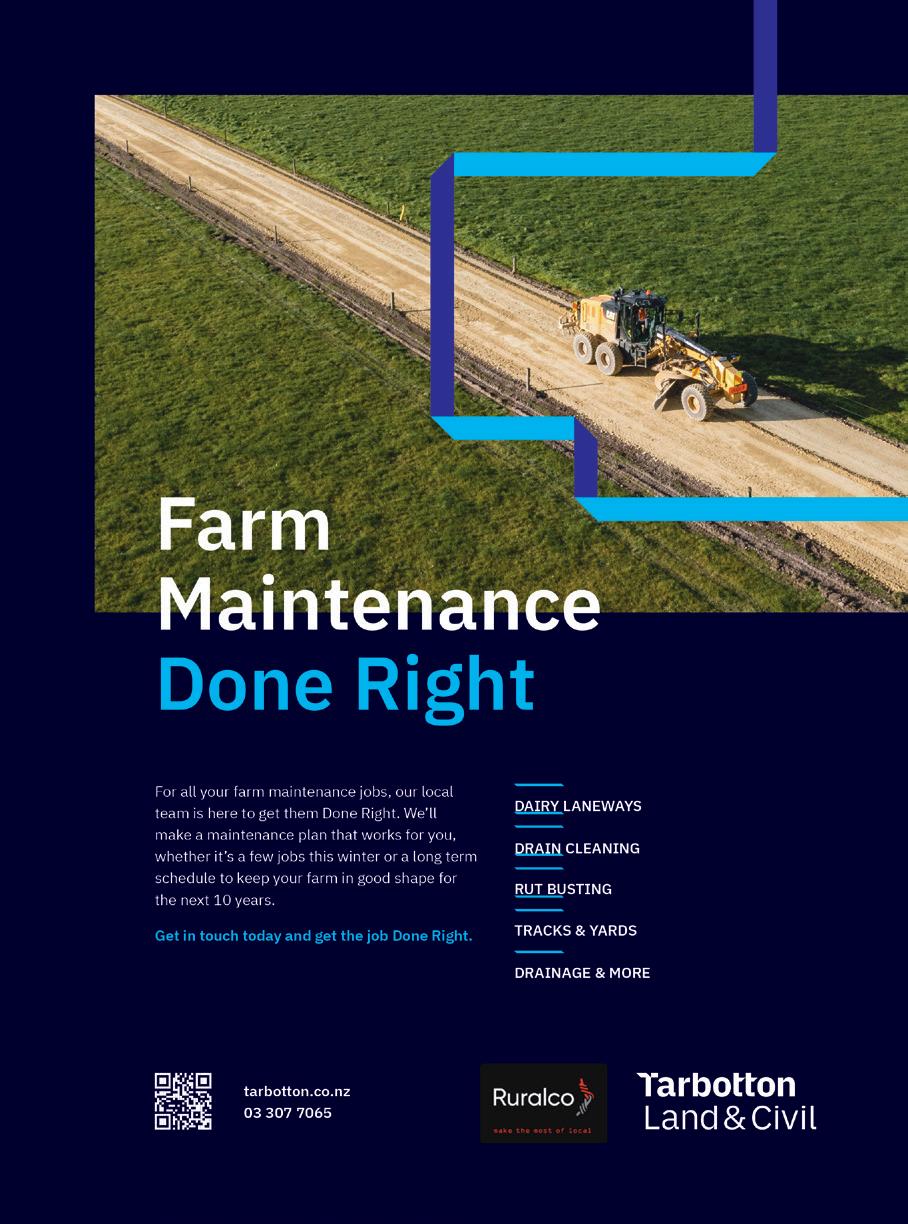
With registrations now open for the 2023 Ruralco Longbeach Coastal Challenge the organising committee are well into preparations for the 16th running of Mid Canterbury’s iconic event. Dust off your bikes and shoes because the coastal challenge is calling!


saw entries from many local schools including Longbeach, Hinds, Mayfield, Allenton, Mount Hutt, Mt Somers, Methven Primary, Ashburton College, Waihi, Geraldine, Tinwald and Ashburton Intermediate.
Farmers know better than any that the weather will not be controlled, and the committee is heartened to see so many local farmers continue to support the event, sunshine or rain. Last year’s wet track required more bike skills than other years, but over the finish line the mud was offset by the whites of people’s eyes and teeth, with many hardy athletes and relentless optimists coming in with massive smiles.
Since it’s inception in 2007, the Ruralco Longbeach Coastal Challenge has steadily grown in numbers, fundraising and reputation. From its beginnings as a single mountain bike race the challenge has grown to an event with three bike races, two walking events and three runs. And with over 12,500 participants having competed over the years, the event is part of many people lives, from the one event they come to each year, to those who are racing for the prize money on the way to chasing their mountain biking and athletic dreams.
Incoming Committee Chairwoman, Rachael Rickard, is no longer chasing athletic dreams but since moving to Mid Canterbury in 2008, all but one year, the Ruralco Longbeach Challenge has been a race she’s attended. And it’s an event she is very passionate about.
“It is a privilege to take on the role of Chairwoman for this event as it is an event I fell in love with the
first year we moved to Mid Canterbury. That first year was very memorable as having done a bit of cycling I thought I was handy on the bike. After a bit of banter between Jase (my husband) and I, we thought we’d go head-to-head and race. It only seemed like a good idea as when I should have biked off and taken my moment to win, I waited patiently— including when he went for a swim in the river. Long story short, after grueling it out back and forth over 35km, we ended up in sprint finish with the late Bernie Davidson full volume on the microphone at the finish line calling it in. Needless to say, I lost the race, but my love for the event, the community and the cause did not. Now I get to complete (not so much compete!) alongside our three children, and help raise funds for the community we live in” said Rachael. Many a budding young Mid Canterbury athlete has raced the event too. Since Anton Cooper in his early years, the committee is now seeing another generation come through, taking on the longer distances each year and setting some impressive times on course. Last year
In the Corporate Teams event, special mention must go to Ruralco’s own team who took out the 23km event, a trophy they will want to defend in 2023! In recent years the Corporate Teams events trophies have been dominated by teams from Big Al’s Methven and BNZ, so it was magnificent to see Team Ruralco swoop in and collect the gold.
In addition to those out racing, competing, and completing the event is support by over 100 volunteers, from committee members, to catering on the day, to track preparations and management, to site management and sponsorship. There are huge number of hours that go into making this event the success it is. The committee hope that this year you will join on Sunday 26 November for what will be a great day out.
• All funds raised are split equally between the Hinds and District Lions and the Longbeach School.
• The committee thanks the businesses who continue to support and sponsor this event.
• The 2022 event raised $22,000, total event fundraising now exceeds $350,000.
• Over 12,500 entries have been received across the past 15 events.
• Coffee, sausages, steak sandwiches and ice cream will all be available at the event site.
• The event will start and finish at Longbeach Estate with thanks to the Thomas and Mackenzie families for allowing the event entry to their working farms.
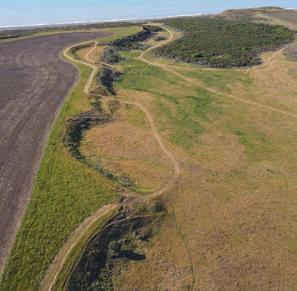
ENTER ONLINE: www.longbeachcoastalchallenge.com
SAVE THE DATE: Sunday, 26 November 2023
Now is the opportune time for farmers who are looking to secure their future energy, lower costs, and reduce their carbon footprint, to embrace solar power.
As energy prices continue to rise, and environmental consciousness grows, solar energy emerges as a leading option - ensuring that farmers can reap the rewards of their investment for decades to come and pave

the way towards the next generation of sustainable agricultural practices. Under the lens of environmental responsibility, farmers are increasingly turning their attention towards sustainable practices. Now, more than ever, the agricultural sector has a unique opportunity to take charge of their energy needs, reduce costs, and make positive impacts. The installation of solar systems has emerged as a smart play for the industry,
particularly in applications that are energyhungry, most notably dairy, irrigation, and processing.
In the 2021 season, the average Canterbury dairy farm’s operating expenses amounted to $5.25 per kilogram of milk solids. Irrigation costs including electricity were 31¢/kgMS, while additional electricity use was 9¢/kgMS. With an appropriately sized and modelled solar array, we can expect to slash energy
consumption by up to 50% or more—which quickly adds up to tens of thousands of dollars annually. Green finance options are becoming more prevalent and can allow investment in solar without a large capital outlay or tying up cashflows, so farmers are still able to allocate resources to other essential areas. An investment in solar has become increasingly more attractive—with a payback period of as little as five years, and a life span of up to 30 years, the benefits extend far beyond the initial investment.
It’s not just the farming community that has a vested interest in responsible stewardship of the land and is poised to take considerable steps towards reducing its carbon footprint— dairy giants like Fonterra and Nestlé are also pushing the increased importance of low

carbon supply chains. As we continue to head towards further decarbonisation, farmers need more tools to be able to offset emissions. Solar energy can provide an ideal means in helping to achieve this through its straightforward monitoring and reporting practices.
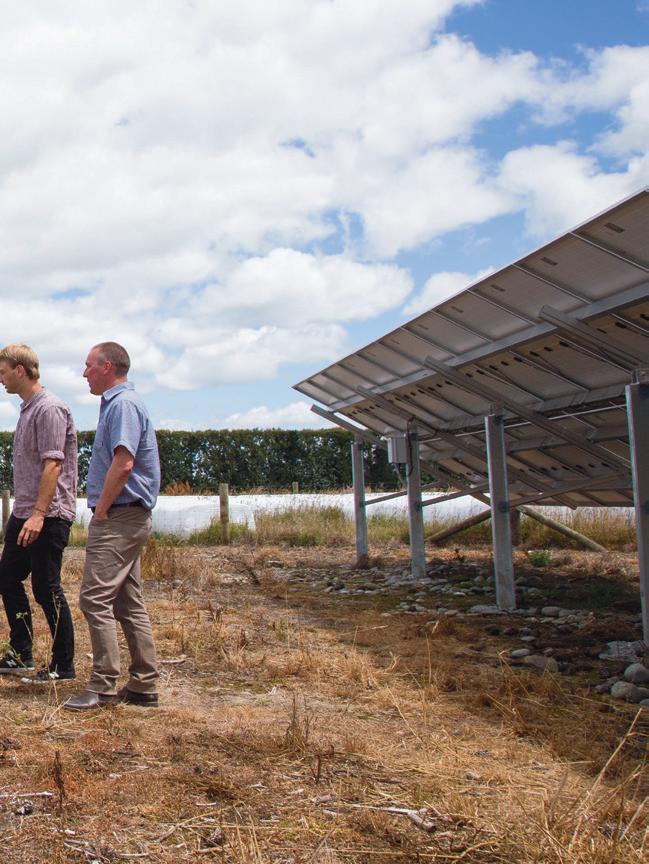
With the government heavily pushing for electrification in the coming years, changes in energy prices are going to reflect this increased demand. Solar energy generated on-farm will offset consumption—feeding the farm loads first, and any excess solar generation being exported back to the grid for a credit. This allows for a build-up of credit over winter months when energy demand is lower on farm, which can help to further offset peak season consumption. Platinum Energy is also able to implement other measures to
help maximise self-consumption and improve your return on investment, such as diverting excess solar towards water heating, acting as a cost-effective means of energy storage, or by providing solutions for sharemilker arrangements.
So, while decarbonisation efforts are widespread, decisions that make financial sense are still key. On an upward trajectory, energy costs continue to place a burden on operational expenditure – far from an incidental item in the farm budget. Providing an endless supply of renewable energy that can be harnessed for years to come, solar allows for a degree of energy independence for farmers, offering stability and predictability, and a shield from the volatility of traditional energy prices.
To find out more about how solar can work for your farm, contact Ruralco Energy on 0800 787 256 or Platinum Energy on 03 349 2783.
PROMOTIONAL FEATURE WAS PROVIDED BY PLATINUM ENERGY
“Now, more than ever, the agricultural sector has a unique opportunity to take charge of their energy needs, reduce costs, and make positive impacts.”THIS



Cropmark Seeds are excited to release a new Spring barley to the New Zealand market that comes from the world leading Syngenta UK barley breeding programme.

SY Dolomite is a new feed barley variety developed in NZ in conjunction with Cropmark Seeds as head licensee and released to the NZ market for the first time this year. Other recent releases from this programme include SY Transformer and SY Silhouette Spring barleys. With medium height, medium maturity, and moderate-stiff straw, SY Dolomite was selected for its ease of management and reliable yield across all environments. SY Dolomite has the ability to yield over 12 tonnes per hectare in high yield potential environments by taking advantage of good growing conditions. However, it can also produce reliable yields, good grain size and test weights when yield potential is reduced due to dry weather.
SY Dolomite will produce a reliable high yield at any sowing time and can be sown from May
through to early November, with plant growth regulator and fungicide inputs tailored to the different sowing times.
While being an excellent option for grain production, it is also well suited as a whole crop silage variety. High quality silage is achievable due to its high grain yield, good straw production and good resistance to most diseases including scald and mildew. Starting life as one ear selected out of 20,000 ears back in 2014 by the Syngenta UK barley breeder, SY Dolomite is a cross between Laureate and Piper and has been in 42 replicated trials all over NZ, numerous full paddock evaluations and seed production paddocks prior to its commercialisation.
As a measure of its success, SY Dolomite has performed well in all Cereal Performance Trials (CPT) trials to date, which have been independently run on commercial arable farms throughout New Zealand under the organisation of the CPT committee. The data from these trials, which is published by FAR, represents trial sites across a range of
both irrigated and dryland areas throughout Southland, Canterbury, and Manawatu in the North Island over an average of four years. The trials are sown amongst commercial crops and are treated with the same management inputs and subject to the same climatic conditions. This gives end-users confidence that varieties that perform at the top of these trials have been rigorously tested and evaluated for yield, grain quality and tolerance to disease throughout a wide range of farm environments.
Cropmark are anticipating high demand for sowing seed of the new variety this Spring. SY Dolomite is available in either 500kg or 25kg bags and can be treated with Poncho and/or Kinto Duo seed treatments.
For more information on this new variety, contact your Ruralco representative.
THIS PROMOTIONAL FEATURE WAS PROVIDED BY
CROPMARK SEEDSinitiatives and technologies which can assist all farming operations. This year over 80 supplier businesses participated onsite and online, with an extensive network of card merchants also participating through their own stores, and with more than 2,000 members attending the twoday event.
Each year the Best Site awards are keenly contested by both retailers and business partners, and this year was no exception with all prize winners excited to be recognised both for the efforts they put into their respective sites and the level of service they offered.
Judges for the Best Partner Site, former Ruralco Board Chair and Ruralco shareholder, Jack Allan, and former Ruralco supplier representative, Stevie Young, say the criteria wasn’t just about having the best-looking site, but also around the site holder’s ability to build relationships with customers and potential customers. This years’ winners clearly demonstrated this, with SuperUtes 4x4 taking out the top prize for the second year in a row, thanks to their thorough understanding, promotion and selling of their products.
Operations Manager, Nick Moore says they definitely wanted to retain the winning title from the previous year. “It was very much on our radar to win again and I’m really proud of our team,
Group CEO, Robert Sharkie says there was some nervousness pre-Instore Days given the current economic environment. “We know it’s hard work out there at the moment, but we have been pleasantly surprised with the positive response to our Instore Days. It’s great to see that level of confidence within the farming community as we come together to celebrate all things agricultural.” It’s also good for the local community, with plenty of businesses benefiting from the influx of suppliers and farming folk coming to town for the two-day event, which ran from Thursday 6 to Friday 7 July. “A big thank you to the Ashburton community for its support of this event. While it can be a bit disruptive with the extra traffic and pressure on parking, Instore Days is great for the town, with plenty of increased retail activity. The hospitality sector also gets a boost with more visitors staying and eating in Ashburton,” he says. While the Ashburton, Rakaia and Methven stores all experienced high numbers of visitors, Ruralco’s online presence continued to grow during Instore Days, with the first online sale recorded at 2am on the first day. “It’s great to be
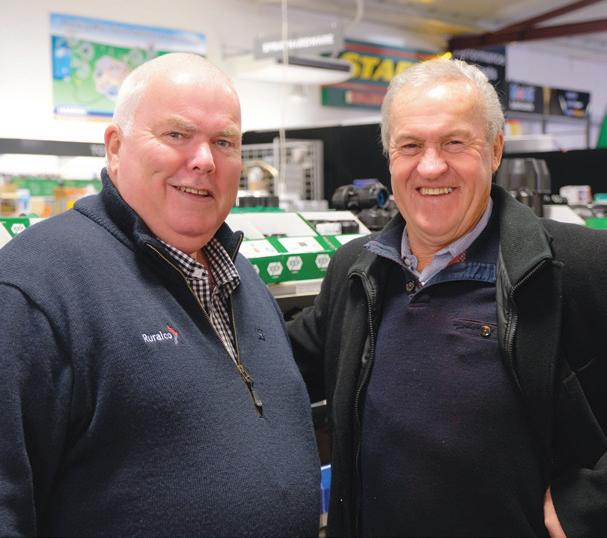
able to meet our members’ needs in a variety of ways. Yes, it’s about pricing, but it’s also about providing meaningful and sincere service. We know that our business is intricately intertwined with our farmers’ businesses—we are very attuned to that, and we genuinely care about what happens to them.”
There’s been even more cause for celebration this year as the farming co-operative gears up for its 60th anniversary. From humble beginnings in 1963 when a group of Mid Canterbury farmers got together to find ways to lower agricultural input costs, the co-operative has grown beyond its original catchment, having a national reach through its online presence and card network.
“The original intent to support farmers has remained unchanged. We’ve had farmers’ backs for 60 years and we will continue to do so for another 60,” says Robert.
Instore Days is part of that long held tradition and remains a great opportunity for the farming community to come together, to meet with the Ruralco team and other industry players to hear first-hand about products, services, new
ABOVE: Ruralco Group CEO, Rob Sharkie & Chair, Sir David Carter
BELOW: Ruralco’s Daisy the Cow is a crowd-pleaser, especially when carrying a milk urn of lollies
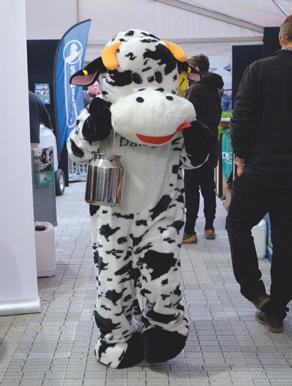
Cameron, Chris and Justine. The Ashburton based business specialises in 4x4 accessories and camping gear and was also pleased with this year’s business leads coming out of Instore Days. “It’s gone better than we thought. We’ll definitely look to come back again next year.”
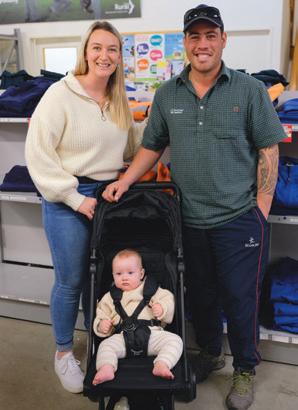
Best Partner Site runner up, FMG, were praised by the judges for their bright site and their team’s knowledge of their products, inside and out.
FMG was proud to be recognised in this year’s Partner Site Awards, says FMG Alliance Specialist, Gareth Morgan. “The Ruralco Instore Days are a highlight on the local calendar and a great opportunity to engage with the local community alongside our partners. We are grateful to be a part of such a well-organised and well-supported event and would like to thank the Ruralco team for their hard work in making the event such a success!”

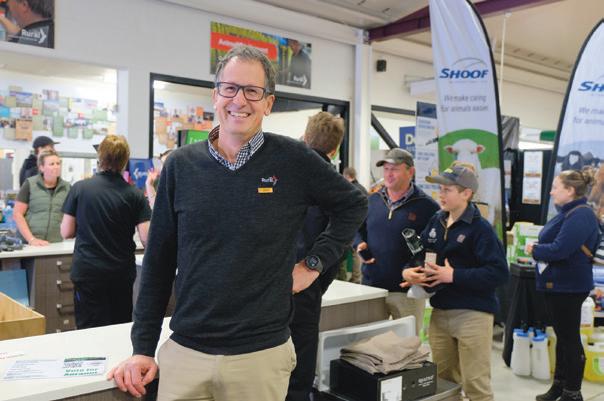
Judges for the Best Retail Site were Kai for Kids founder and Ruralco shareholder, Jo Taylor, and current Ruralco Board Director, Rhea Booker.
The pair say it was a big challenge judging the sites, but what impressed them most was the connection and good heart of the ag community on show.
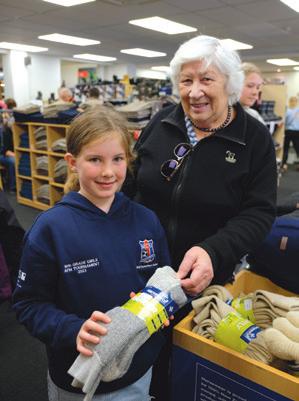
In announcing the overall winner, the pair say their job was made very difficult by the high calibre of sites, but ultimately the knowledge and passion for their products and their total engagement made first-time Instore Days attendees, AgriVantage the stand-out winner. Mary Fleming of AgriVantage says the team felt very privileged to be at Instore Days for the first time, describing the atmosphere as positively buzzing and that it felt like quite a coup to take out the best site award. The business specialises in supplying a range of high-quality animal nutrition solutions focused on rearing and growing great livestock, backed up by science, nutritional advice and technical support. “We are a small player which likes to punch above our weight. Having worked
ABOVE: Ruralco Group Manager Farm Supplies, Jono Pavey
ABOVE LEFT: Sue Butterick-Kent & Libby Brockhurst
BELOW LEFT: Brittney, Jake & Eadie Pairama
more closely with Ruralco over the last year, we appreciate their support and have really enjoyed being part of this special event.”
Retail Site runner up, Ensol has had its eye on a prize since it started coming to Instore Days around five years ago. General Manager, Shane Parlato says winning is really exciting for us. We have watched the ceremonies over the years, and we are very proud to be receiving an award this year.” He says the synergy which exists between Ruralco and Ensol is awesome as “we share a similar ethos.” He says Instore Days is great and Ruralco is a special place. “We feel very lucky and grateful for the opportunity to come here each year.”

BEST SITE – PARTNER
Winner: SuperUtes 4x4
Runner Up: FMG
Special Mention: Dan Cosgrove
BEST SITE – RETAIL
Winner: AgriVantage
Runner Up: Ensol
Congratulations to the winners of this year’s Instore Days major prizes—three House of Travel vouchers worth $5,000, $10,000 and $15,000. Every $250 spent during the month of June and up until 9 July gave members an opportunity to accumulate entries to go in the draw.


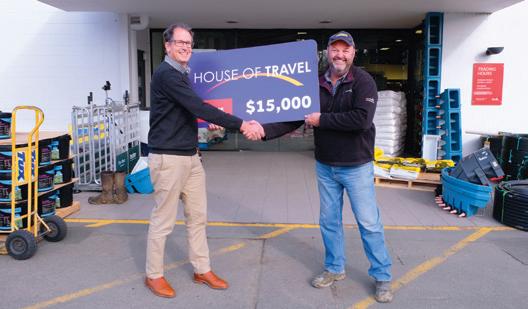
RURALCO MEMBERSHIP
Air Fryer and goodies
Ann Green
Robyn Sewell
RURALCO ENERGY Generator
Philip Rushton
RURALCO KIDS COMP
Under 5 goodie bag
Emily Hurst
5–7 goodie bag
Lochie Harrison
8–11 goodie bag
Libby Brockhurst
ALLIED
$2,500 Travel voucher
Hundal Farming Ltd
MITRE 10
$1000 Mitre10 gift card
H J Bennett
A J & S T Banks
Terrace Farm Limited
PLACEMAKERS
$500 Placemakers gift card
M E & M J Kingsbury
G A Cullimore
AAKLAND CHEMICALS
200kg of MinMax
Lynskey Agriculture Limited
100kg of MinMax
N K & K L Hammond
NUFARM
Battery powered portable cooler 50L
Bonar Farms
ALLFLEX
Weber Q3100 BBQ with stand
Viewbank Dairy
Lock Farms
Flat White Dairy
CASTROL
Honda XRM 125 motorbike
Anthony Hampton
STRAINRITE
Stihl Chainsaw
Glenalla Farm
Flirt with Life Limited
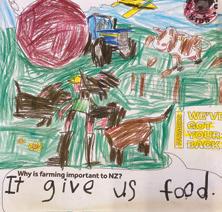

This year Ruralco is celebrating 60 years of business and 60 years of supporting farmers for a brighter farming future. To celebrate, we wanted to ask Ruralco Kids “Why is farming important to New Zealand?” The response we received was truly heartwarming and inspiring. The children shared their heartfelt thoughts on the significance of farming to the country.


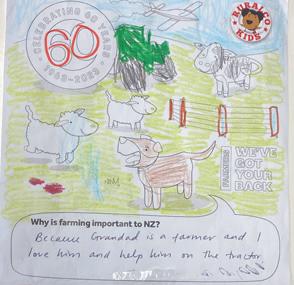
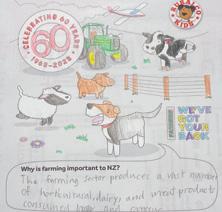
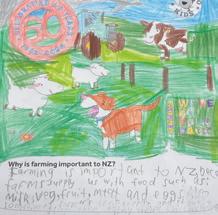
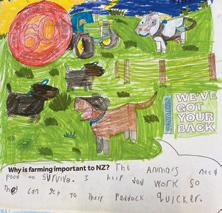
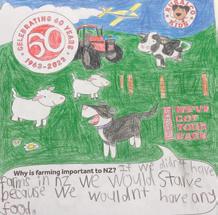
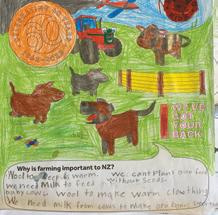
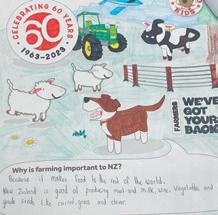
We were moved by the multitude of entries and the quotes we received, witnessing the genuine appreciation they have for the agricultural industry. Here are the winners and special mentions from the 2023 Instore Days Colouring
Competition. These young talents have beautifully expressed their admiration for farming and demonstrated their creativity through their colourful artworks. We are thrilled to share their brilliant contributions with you.
WINNERS:
SPECIAL MENTIONS:
MORE ENTRANTS:







Micronutrient deficiencies can impact wheat yield and grain nutritional quality, but does applying micronutrients always improve these factors?
three lime application rates (0, 5, 10 t/ha). Two sites showed averaged yield responses across treatments of 0.4 t/ha (at Rakaia) and 0.9 t/ha (at Barhill) to Mn, but not to Zn or Cu. At the Barhill site, applying lime without Mn caused a significant yield reduction (averaged 8 per cent), and this effect was overcome when Mn was included with lime treatments. It appears Mn deficiency was yield limiting and the effect was exacerbated by liming.
According to the trials, the only micronutrient likely to limit yield in Canterbury is Mn, particularly in known localised areas of deficiency such as Barrhill, and also if overliming raises soil pH above optimum. If soil pH gets too high the risk, particularly in cereals, is that plants will not get enough micronutrients. Application of lime, particularly at above optimal pH, can worsen micronutrient deficiencies such as Mn, so overliming should be avoided, particularly on soils prone to low Mn levels.
It is not quite as straightforward as that, according to results from a comprehensive trial in Canterbury, New Zealand’s main wheat growing area 1
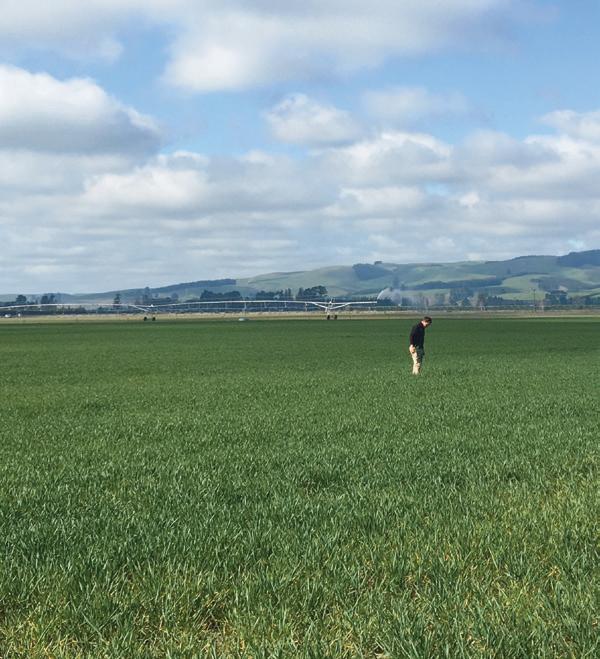
The trial demonstrated that if soil pH is maintained in the optimum range of pH 5.8–6.2, wheat is unlikely to show a yield response to the micronutrients boron (B), copper (Cu), manganese (Mn) or zinc (Zn).
The trials were carried out over two growing seasons on commercial farms, across 20 sites in Year 1 and three in the Year 2. In Year 1, crops received either no micronutrients (control), Cu (soil or foliar applied), Mn (foliar applied), and Zn or B (soil applied). There was no significant yield response to any of these treatments in the first year, despite about half the trial sites being below the suggested critical soil thresholds for Cu and Zn. Furthermore, soil test results
for Cu and Zn did not correlate with the plants’ micronutrient status.
After Mn foliar application, two sites showed a significant yield reduction. Tissue Mn at ear emergence in treated plants ranged from 21–164 mg/kg, and was in some cases above Hill Laboratories’ normal range of 25–100 mg/ kg. On untreated plants, tissue Mn was always within the normal range.
After Cu foliar application, overall yield reduced by more than 0.5 t/ha at four sites, and visual symptoms of damage were seen in some plots, indicating crop damage. However, in treated plants, tissue Cu levels at ear emergence ranged from 5.6–22.6 mg/kg, which is within the normal range of 5–25 mg/kg.
In Year 2, responses to soil applied Zn and foliar applied Cu and Mn were assessed (as grain yield and micronutrient levels in tissues at mid-late tillering and ear emergence) under
To identify a micronutrient deficiency, crop tissue tests are recommended, as in the trial soil tests for micronutrients did not correlate with the plants’ micronutrient status. Crop tissue levels correlate well with relative yield. Micronutrient application is not an effective way of improving the grain’s nutritional quality; in the trials, applying micronutrients increased concentrations in vegetative tissue but not in the grain (with the exception of Zn in Year 2 sites). Although direct yield responses to micronutrients are unlikely, there may still be value in applying these micronutrients to prevent their depletion in intensively cropped soils using a product such as YaraMila Actyva S. This ideal base/starter fertiliser for spring (or autumn) sown cereals contains Mn, Zn and B as well as nitrogen, phosphorus, potassium and sulphur in a convenient granule to help promote an even establishment. It is suitable for broadcasting or drilling.
The best approach is to plan cropping well in advance and apply lime a year before the most pH-sensitive crop in the rotation. Lime needs at least 12 months to take full effect, and 1 t/ ha will shift pH by 0.1. If pH is less than ideal, take this into account in yield estimates.
THIS PROMOTIONAL FEATURE WAS PROVIDED BY BALLANCE AGRI-NUTRIENTS
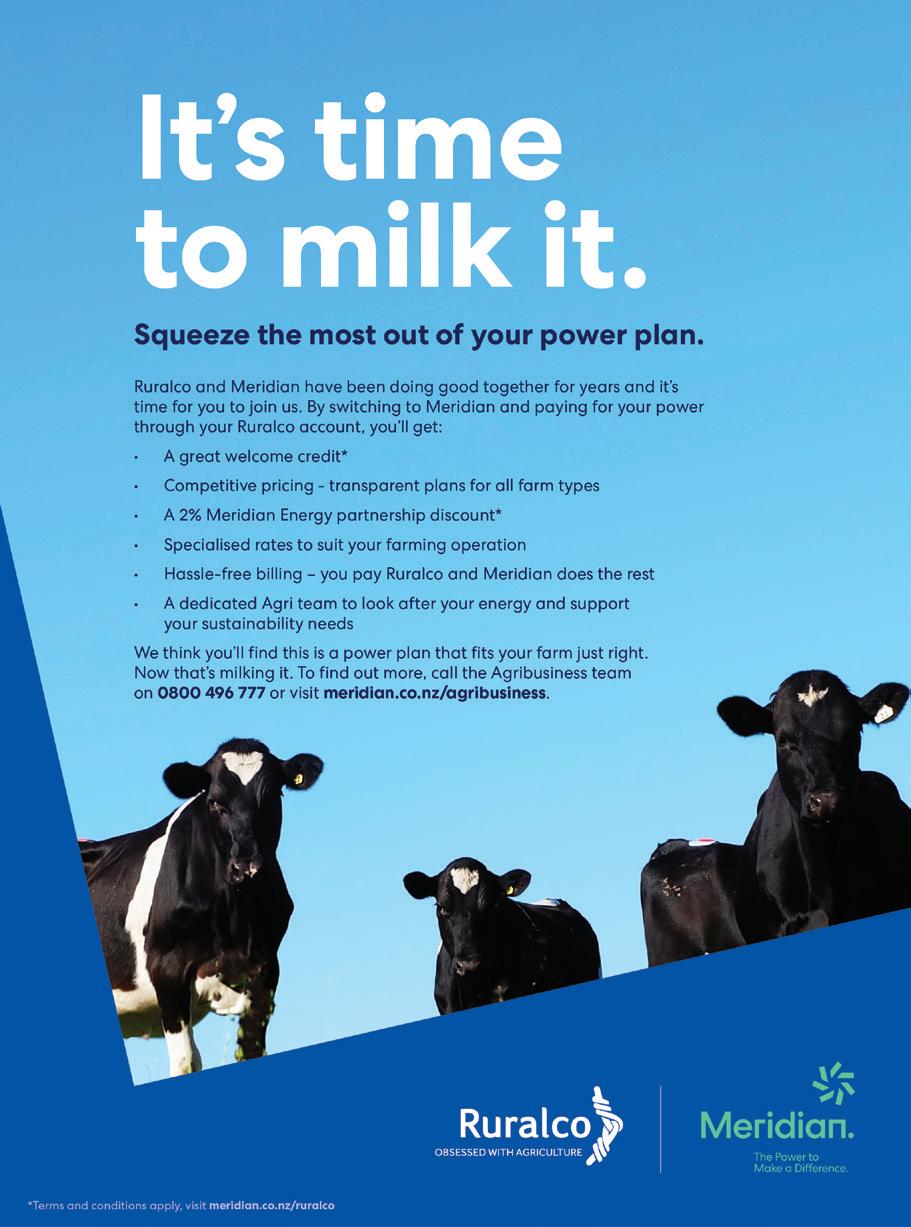
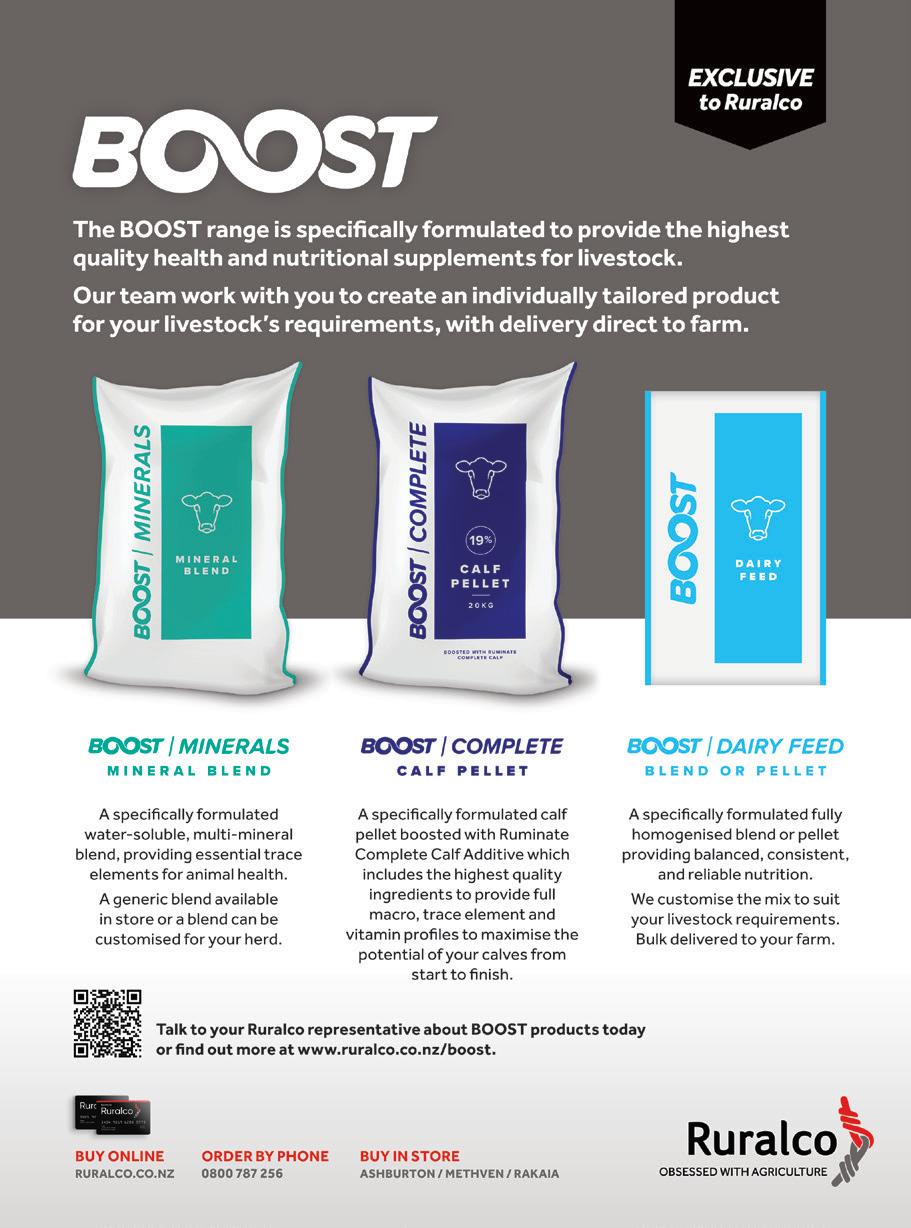
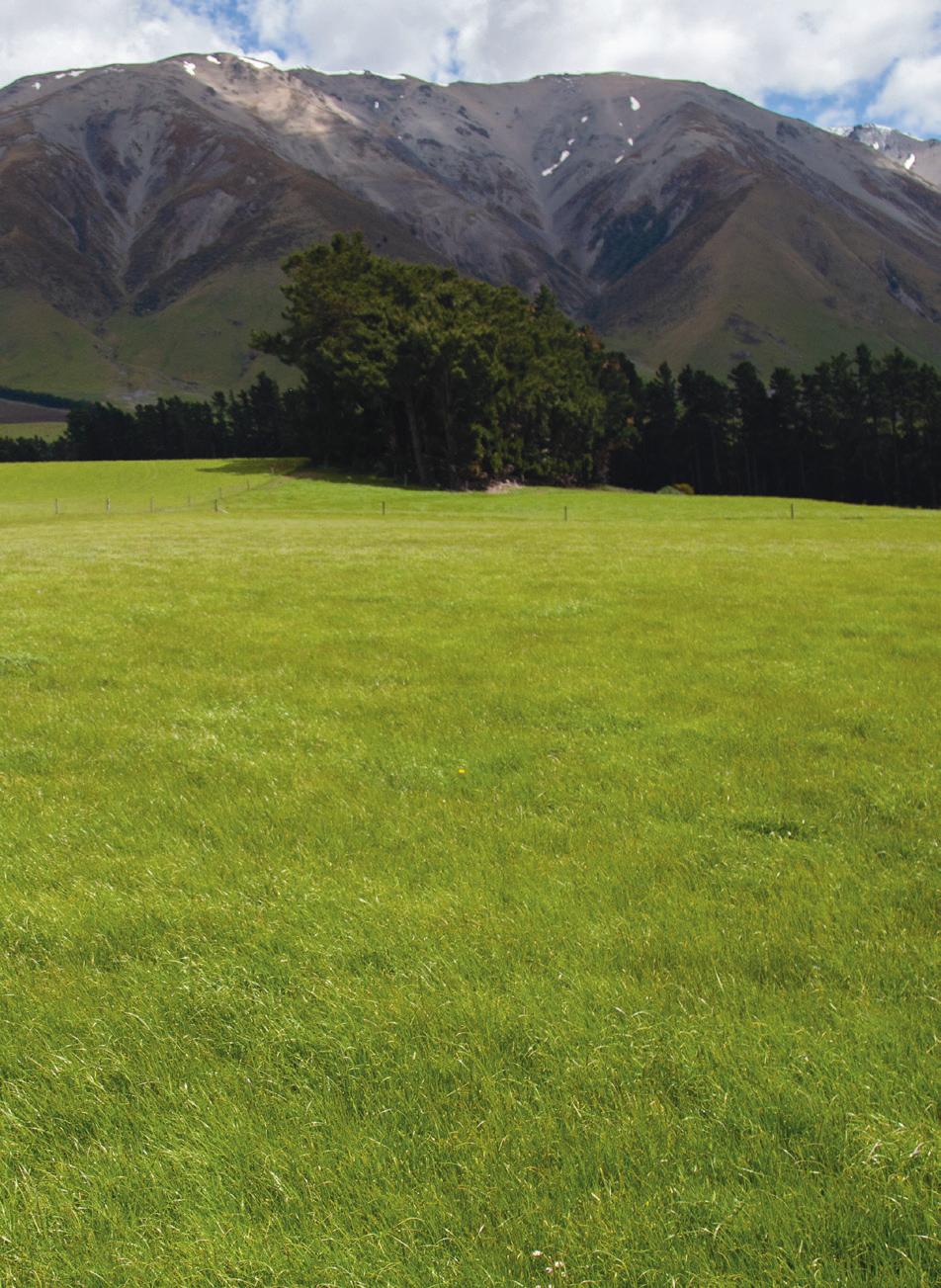
Dairy farming on the edge of a higher altitude area can produce a few challenges—but for Jayson and Clare Nish, growing maize isn’t one of them.
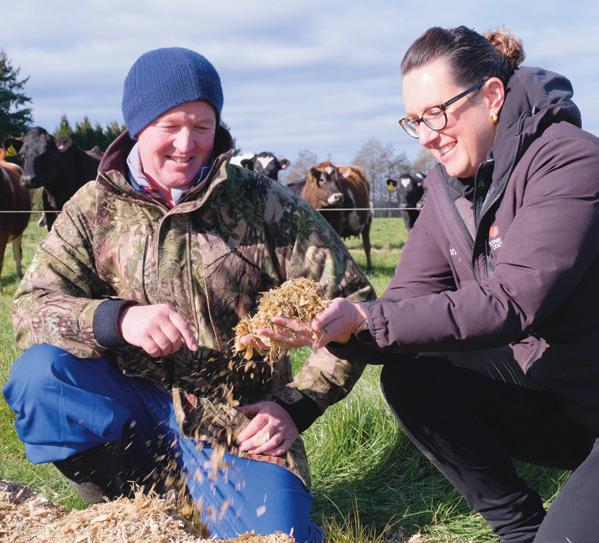
in Canterbury who feed barley, wheat or PK heavily in the shed.
“We don’t have the option to feed grain, so maize silage is helpful in the shoulders of the season,” Jayson says. “It means we are able to get condition on in autumn and continue to milk. It also helps ease of management in spring, if it’s a slow season.”
Jayson says Ruralco On-Farm Account Manager, Melinda Driscoll, and Pioneer Brand Products Area Manager, Daryl Moore, are an asset to the wider farm team.
“Both are very good throughout the process, from acquiring seed to setting it down,” he says. “Melinda does it all for us, and she has a great team behind her, keeping an eye on the crop. And they’re not afraid to bring Pioneer in and ask questions if need be. Daryl is always available to talk to.”
Jayson says since they’ve grown maize for several years now their set-up process is quite straightforward.
With other seasonal factors at play that a farmer cannot control—such as weather and feed prices—Jayson says maize silage gives them the confidence that they have feed available in the shoulders of the season.
“If feed supply becomes difficult, we know that the cows will be well fed,” Jayson says.
Milking 630 cows on 185ha effective at Ashburton, the couple farm at 200m above sea level, right on the cusp of where late frosts put paid to burgeoning maize crops.
However, with the help of Ruralco and Pioneer Brand Products the couple harvests a bountiful maize crop to help extend their milking season, fully feed their calving herd and support any challenges a difficult spring might generate.
The Nish’s have been growing maize on farm for the last 10 years, on their 100ha support block across the road from the home farm. There is very little maize grown between their farm at Ashburton and Mt Hutt further inland, mostly due to frosting.
Although it varies from year to year, the couple usually grows 8–10ha of maize on the block, yielding 22–25 tonnes/ha.
Jayson planted Pioneer ® P8000 last year—a tall hybrid with low ear placement, strong roots and stalks which delivers high energy silage with outstanding feed value. This year, they have decided to plant Pioneer® P8333, a highly productive mid-maturity hybrid. This hybrid yields well in the South Island and has superior drought tolerance and staygreen,
whilst delivering top silage yields for its maturity with impressive energy and digestibility.
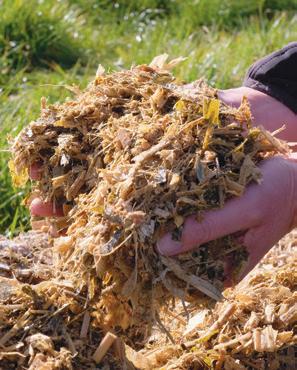
Jayson says they do have to watch their maize crop planting and harvest times a little. Planting is around October 15, the earliest they can have the paddocks ready.
He says the original purpose of planting a maize crop was to help extend milking into the autumn, and the 290,000kgMS the herd produces reflects that strategy. However, the application of maize silage in the system has changed slightly over time.
“We now also feed it in spring, before calving,” Jayson says. “The calving herd has limited grass, maize, gypsum and magnesium chloride. This allows more pasture to be allocated to the milking herd.”
The amount of maize silage they feed per cow varies, but it is usually 4–5kg/cow in autumn, fed through until spring when they see grass seed head emergence on farm and there is a risk of too much NDF (neutral detergent fibre) in their diet. In spring, maize silage is reduced to 2kg/cow.
As a System 2/3 farm business, Jayson relies on maize silage more than many other farmers
“The seasons are changing. We have been able to grow more grass this season for sure, but if it gets tight, we have the maize on hand. We are thankful to have it.”
THIS PROMOTIONAL FEATURE WAS PROVIDED BY PIONEER


GIFT GIVING
As wedding season approaches, find the perfect gift to celebrate your loved one’s union. Whether it’s an engagement gift, wedding or a birthday, our high quality range is sure to be cherished for years to come.



ALL ITEMS AVAILABLE FROM RURALCO


Hello Friday was founded by a busy and fashionforward entrepreneur, who seeks to add a touch of flair to their everyday hustle without compromising on style or comfort.
With new ranges released every season, Hello Friday constantly brings fresh and exciting designs. Check out our favourite essentials for spring.
MAEVE HOLD ALL $79.70
NINA CROSS BAG $59.90


LEXI PHONE BAG $53.40
DEMI CARDI – GREEN $80.30


ALL AVAILABLE AT RURALCO

Aviation safety expert Fletcher McKenzie has interviewed 23 Kiwi pilots who between them have flown a wide range of aircraft. Their stories will have you on the edge of your seat.


Provided by Tori Pollard
INGREDIENTS:
2tbs olive oil
2 carrots, diced
2 medium potatoes, diced
½ medium onion, cut julienne
200g baby beetroots, drained
300g seasonal salad mix
200g halloumi
1 handful of crispy noodles
2tbs walnuts, crushed or halved
3tbs honey
Balsamic glaze to finish
Salt and pepper to taste
METHOD : Preheat oven to 200 degrees Celsius. Prepare a roasting dish with 2tbs olive oil.
Dice all fresh vegetables into floret-sized pieces (approximately 1”) and toss through oil in roasting dish. Season with salt and pepper, then place in oven and bake at 200ºC for 20 minutes or until golden. Drain baby beets and set aside.
Heat a non-stick pan over medium-high heat. Cut halloumi into thin rectangles (approximately 0.5cm thick) and fry for 3 minutes on each side until golden. Add 1.5tbs honey to pan, coat halloumi and fry for additional minute, then remove from heat and set aside.
In a large bowl create a bed using salad leaves. Scatter roast vegetables and baby beets on top. Add halloumi, sprinkle with walnut pieces and crispy noodles. Drizzle with balsamic glaze, honey, and serve. If needed, warm honey in microwave to get runny consistency. Serves three to four.

The Queen of Crime returns with a new Jane Tennison thriller. She’s left her busy West End job for a quieter station. But then a case lands on her desk and she’s as busy as ever.
This is the biography of the amazing life of hugely talented and respected Kiwi musician, Neil Finn.

This is a revised edition of Al’s Eat Up New Zealand. This one’s for the bach/beach house—great stories and recipes.


Spring has sprung and it’s time to refresh your home for the warmer months ahead. Check out our favourite design styles that are trending this season.
Incorporating natural elements, biophilic design and greenery is popular right now. Use indoor plants, natural materials like wood and stone and let natural light stream in.



Spring is the season of blooming flowers, so floral patterns in textiles, wallpaper, and artwork are in style this season.
MAXWELL & WILLIAMS ARCADIA RANGE, FROM $13.10

GABBY MARPIS JARDIN RANGE, FROM $14.00

ITEMS AVAILABLE FROM RURALCO
Neutral and earthy colour palettes are often associated with spring. Soft greens, warm browns, and sandy beiges are on trend right now and create a calming and inviting atmosphere.
ROBERT GORDON SCALLOP VASE $42.20
LINENS & MORE BLISS MOHAIR BLEND THROW $144.80

ITEMS AVAILABLE FROM RURALCO
While minimalism has been popular in recent years, maximalism has seen a resurgence in 2023. Bold colours, mixed patterns, and an eclectic mix of furniture and accessories are becoming more popular.

MAXWELL & WILLIAMS DARCY FLORAL DINNER SET $159.90
MAXWELL & WILLIAMS DARCY FLORAL PLATTER $18.90
EVERLEIGH MARTINI GLASSES

170ML SET OF 2 $39.80
ITEMS AVAILABLE FROM RURALCO
Handcrafted decor items, such as ceramics, woven baskets, and handmade textiles, can add a unique and personalised touch to spaces.

Nostalgia-driven decor, featuring vintage furniture and midcentury designs, are timeless.

BROSTE HYACINTH VASES, FROM $89.00

ITEMS AVAILABLE FROM RURALCO

Ikebana is the traditional Japanese art of flower arrangement, which emphasizes minimalism, harmony, and balance. It goes beyond simply placing flowers in a vase and focuses on creating a beautiful composition that reflects the beauty of nature and the changing seasons.
Before you start, gather the necessary materials. You will need:
Flowers and Branches:
Select a variety of flowers and branches with different shapes, sizes, and textures. Traditional Ikebana often uses seasonal flowers, but feel free to use what’s available.
Container (vase):
Choose a suitable container that complements the style of your arrangement. Our Robert Gordon Flower Log is the perfect vessel to achieve this elegance in your own home. You can also use any vessel with a flower Frog (Kenzan); this is a metal or plastic pin holder that fits inside the vase and holds the stems in place.


Scissors or Pruners:
Use sharp scissors or pruners to cut the flower stems cleanly.
Water:
Fill a container with clean water to keep your flowers fresh.
Before you begin arranging, trim the flower stems at a sharp angle. Cutting at an angle allows the flowers to absorb more water and stay fresh longer. Remove any leaves that will be below the waterline, as they can promote bacterial growth and shorten the flower’s lifespan.
Ikebana arrangements often use a kenzan (floral frog) to hold the stems. If using a floral log, fill the vessel and use the holes to insert your flower stems. If using a kenzan or flower frog, place it at the bottom of your vase and press it gently to secure it in place. The kenzan’s spiky surface will act as an anchor for your flower stems.
Ikebana values negative space as much as the flowers themselves. Leave enough space between the elements to create a sense of harmony and balance. Avoid overcrowding the arrangement and let each flower have its own place to shine.
Ikebana is about creating graceful lines that flow together harmoniously. Consider the lines and angles of each stem as you place them in the arrangement. Achieve a balance between the different elements to create a visually pleasing composition.
Ikebana often tries to mimic the beauty of nature and reflect the changing seasons. Use flowers, branches, and leaves that are in-season to capture the essence of the time of year. Consider the colors, shapes, and textures that represent the current season.
The proportions of your Ikebana arrangement are crucial. Consider the height and width of the vase, as well as the size of the flowers, to ensure a balanced and aesthetically pleasing result.
Ikebana is not just about arranging flowers; it is a meditative and mindful practice. Take your time to consider each element and how they interact with each other. Be patient and embrace the process of creating something beautiful.
There are no strict rules in Ikebana. The most important aspect is to enjoy the process and experiment with different flowers, styles, and containers. Adapt the techniques to suit your taste and the available materials.
With these steps, you can begin your journey into the art of Ikebana and create stunning, harmonious flower arrangements that bring a
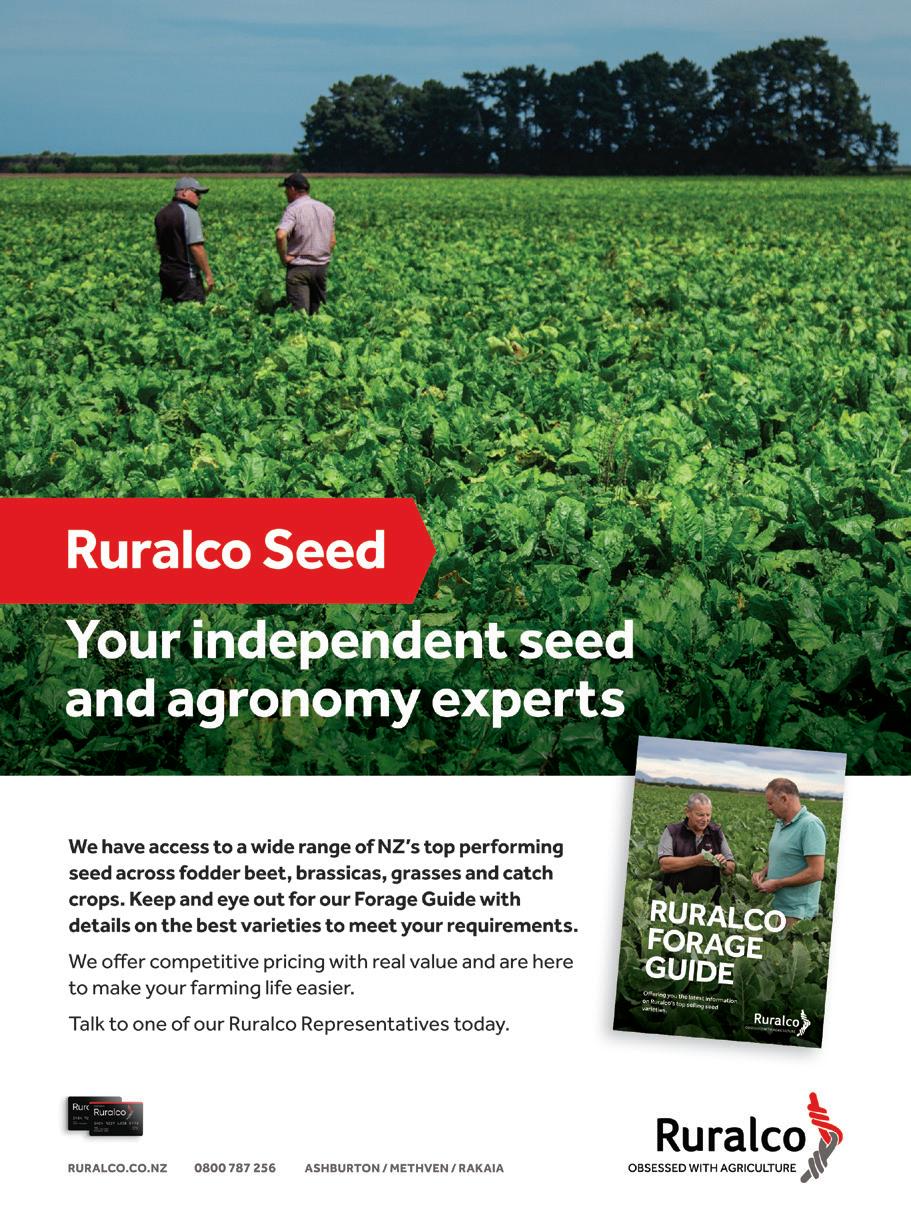
Controlling costs this season while still maintaining good production may sound unlikely. But in fact, there is a way to do both, and spring is the perfect time to take advantage of it. The secret lies in every tired, thin pasture on your farm.
If you can max out even a few of them with a strategic upgrade in coming weeks, you’ll save money on supplements, give your animals the fuel they need to thrive, and ramp up efficiency.
Choose the right pasture, and you’ll reap the benefits of these gains for the next three to five years, so your business can be more resilient going forward, too.
No matter what or where you farm, many pastures are struggling at the moment. They’re not able to support you the way they should this season, and without help, they’ll be even weaker next season. Yes, budgets are tight right now, but imagine
what your income will look like if you keep growing less feed at home, on the farm.
The alternative? Grow more, 14% more to be precise. That’s how much extra feed you get from Forge NEA hybrid ryegrass compared to other hybrids.
Put another way, it will grow around 1.6 tonnes of extra dry matter per ha, per year, over a highperformance perennial ryegrass.
We all know the golden rule of New Zealand pastoral farming – the more feed you grow and harvest directly into your animals per hectare, the cheaper that feed becomes in cents per kg dry matter.
So, using Forge NEA to renew or undersow some of your poorest-growing pastures this spring immediately improves your feed budget, in both senses of the term, through growing more feed off the same area of land.
But the efficiency doesn’t stop there. Because it’s a tetraploid, Forge NEA brings out the best in your animals. They’re happy to harvest it, even when it gets a bit longer than would be ideal grazing height for a diploid ryegrass.
It’s good for them, too, keeping them wellnourished year-round, even in the cooler months of autumn, winter, and early spring.
Make it work
Whether you’re renewing or undersowing Forge NEA this spring, one thing is critical to achieve the best possible return on your investment: Do a really good job, and don’t cut any corners!
Tips for undersowing:
• Pick the right paddocks. There must be space for new seed to grow, so don’t undersow pastures already thick with grass or weeds.
• Order seed, and if needed, book the contractor. Weeds are poised ready to invade and set you back even further, so act fast.
• Graze paddocks, then undersow with treated Forge NEA seed at 15-20 kg per ha.
• Sow no deeper than 2.5 cm. Settle the soil and seed with a nice harrow and/or roll and watch out for slugs.
• Graze normally but be mindful. You need to treat undersown pastures as if they’ve just been renewed.
For more great advice on using Forge NEA tetraploid hybrid ryegrass to super-charge your farm for the next three to five years, talk to the friendly team at Ruralco.
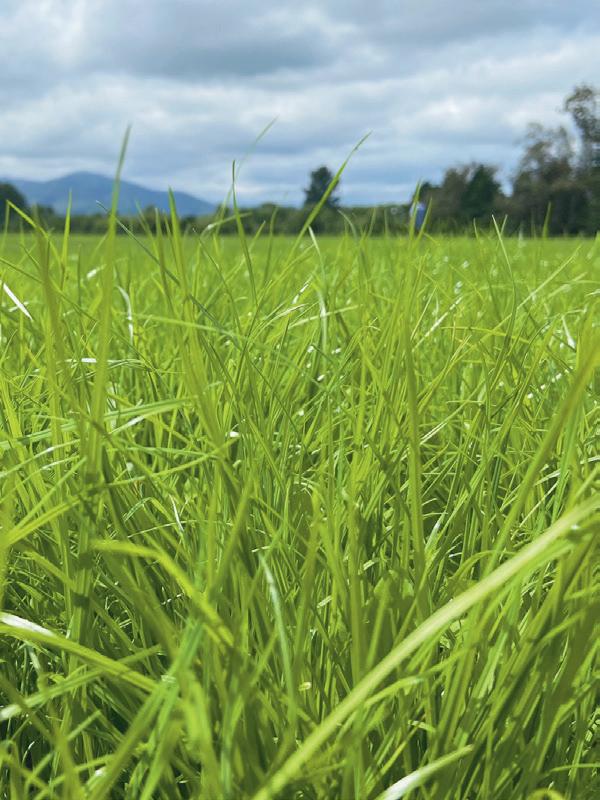
Arable growers are investigating alternative sources of nitrogen as a way to reduce their reliance on synthetic nitrogen to grow crops.
WORDS & IMAGES SUPPLIED BY HEATHER CHALMERS, FOUNDATION FOR ARABLE RESEARCH
Significant rises in the price of synthetic nitrogen, as well as the impending introduction of pricing for nitrogen fertiliser-related nitrous oxide emissions, has led a group of Canterbury growers to look at other ways to supply nitrogen to their crops.
The “Alternative N” group was formed as part of the Foundation for Arable Research’s Growers Leading Change (GLC) programme. The programme, co-funded by MPI, provides a framework for arable farmers to develop, test and introduce new ideas, technologies and ways of working.
In the 2022-23 season, the group tested whether a biological product Waikaitu NZBioAmino, applied in combination with reduced applications of synthetic N, would provide the same yield as a standard N
application. NZBioAmino combines a seaweedbased product with a range of amino acids, naturally providing 9 per cent organic nitrogen.
The product was tried in autumn-sown wheat in seven paddocks over six farms in Mid and Central Canterbury. A strip in each paddock received two applications of four litres of NZBioAmino in combination with a 30 per cent reduction in synthetic N. This was compared with the standard N application and a control strip where no N was applied.
The test strips were measured for grain yield, N surplus and post-harvest mineral N in the soil and greenhouse gas emissions.
Westerfield farmer Darryl Oldham who participated in the on-farm trials, known as tryouts as they are not fully scientifically replicated, says it was hard to tell the difference between the standard and NZBioAmino treatments throughout the season, but later there was a faint line between the two.
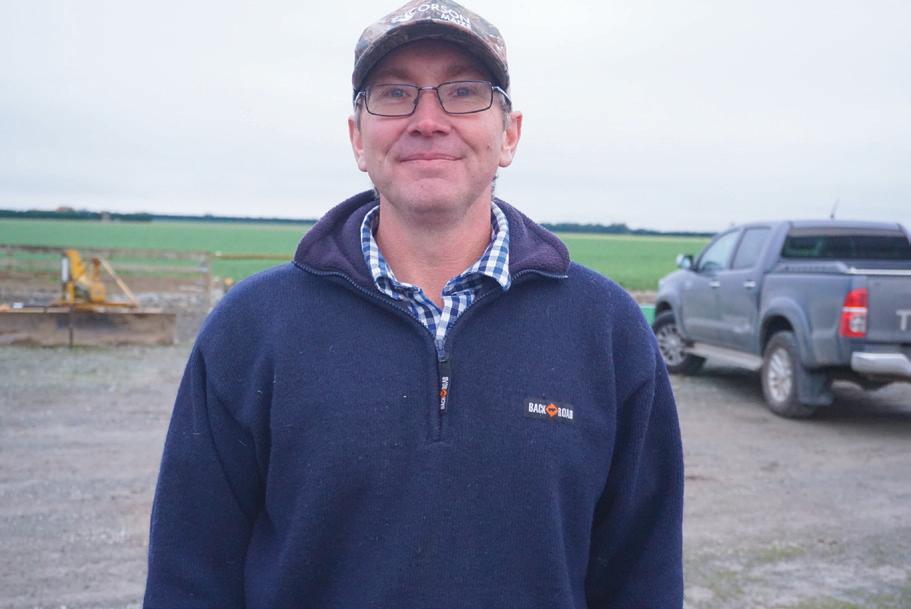
Canterbury GLC Alternative N group facilitator
Donna Lill says last season’s results showed no significant differences in yield between the
standard and NZBioAmino treatments. However, greenhouse gas emissions, a key driver for the project, were lower with the NZBioAmino treatment because of the 30 per cent reduction in urea.
This season, the GLC group is supporting growers who are trying out growing N-fixing beans to boost N-supply to the following crop. A second GLC Alternative-N group, in Waikato, has tried using chicken manure in maize.
Nitrogen use efficiency is a key focus for the arable industry. FAR environmental senior researcher Emmanuel Chakwizira says that FAR has initiated a Ministry for the Environmentfunded project which aims to develop a simple N management indicator for three crops (autumn wheat, ryegrass seed and maize silage) in two regions (Canterbury and Waikato). The threeyear project will work with growers to identify an appropriate indicator for each system, validate the indicator through research trials and produce guidelines for growers, rural professionals and regional councils.
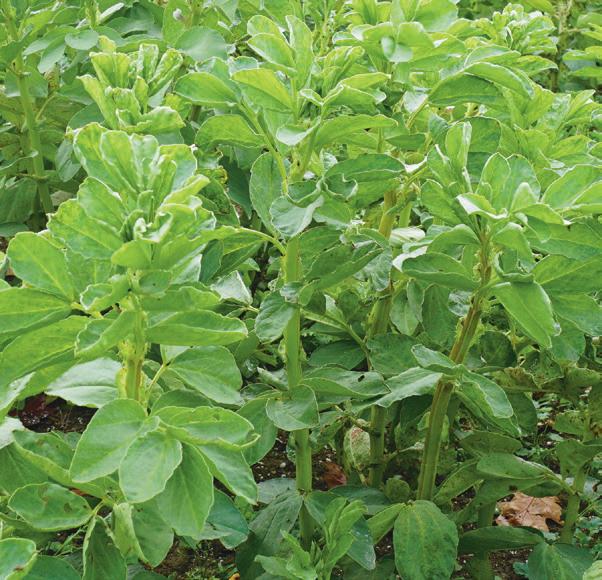
come from the outside round. You are getting 100 per cent fertiliser applied to the very last row of crop whereas a dry fertiliser spreader tapers off near the edges of the paddock. When you are harvesting with the combine that can mean a two to three tonne/ha lower yield for the outside round and that equates to a lot over the whole farm.”
Initially he used ready-to-use liquid N, trucked from Timaru, but this season set up his own 10,000 litre mixing tank. “It was a lot of trial and error and looking at other people’s systems. As I already had storage for dry fertiliser, it was about $15,000 for a tank and pump and has quickly paid for itself in increased crop yields.”
Brent Austin says it is not a “foliar” application. “I’m trying to apply the liquid to the ground and not the leaf. This is because when it stays on the leaf, it burns the leaf. It is taken up by the roots the same as solid fertiliser.” He uses specialist liquid fertiliser nozzles that stream, rather than spray the fertiliser out.
“If you are wearing sunglasses and it is bright and sunny you shouldn’t be applying liquid N. Night is a good time.” As only 1mm of moisture is required to wash it in, a heavy dew or damp ground is sufficient.
As the farm has variable heavy and light soils and irrigated and dryland areas, he uses variable rate applications of fertiliser (including N and lime), based on harvest yield maps and yield potential.
He is one of a group of five growers who are looking at the nitrogen-fixing legume as a source of N for cereals – either as a short-term cover crop followed by cereal, or beans planted with autumn cereal and then sprayed out in spring. The growers, in Mid and Central Canterbury, are part of a FAR Growers Leading Change group trying out alternative sources of N as a way to reduce applications of synthetic N.
This season, Brent Austin, who farms at Lismore, grew faba beans as a short-term autumn cover crop, spun on with a fertiliser spreader in midFebruary then rolled, with no irrigation, fertiliser, or weed control. The beans were then terminated and easily incorporated into the soil before sowing autumn barley in mid-May. This area will be sampled in spring and followed through to barley harvest to see if the N fixed by the bean cover crop benefits the yield in the barley.
Another farmer in the group sowed a grazed cover crop mix of faba beans, buckwheat, and phacelia in mid-January, which after 14 weeks recorded 70kg/ha of total additional N in this area when compared to the area with no beans included in the cover crop. This paddock will also be followed through to cereal harvest to gauge any yield benefits.
Brent Austin has also planted beans at the same time as wheat and barley, to gauge what nutrients these provide to the growing crop. These could be sprayed out in spring or left in the paddock through to harvest.
As he doesn’t grow peas anymore, there are no soil disease issues with growing beans. His rotation is Nui ryegrass followed by maize, wheat, and autumn barley. He doesn’t run livestock, but this winter sold some standing feed (greenfeed oats) to a dairy farmer neighbour to graze.
Canterbury GLC Alternative N group facilitator Donna Lill says that the group will look at how much it costs to establish a legume cover crop compared with the additional N gained. Soil mineral (available) N and Potential Mineralisable N rates will be measured in autumn and spring. “Our interest is how much N do beans provide to the following crop.”
Brent Austin has been using liquid N on all crops for three years and says that while he is applying similar rates, he gets better crop yields compared with a solid product. “I feel it is more efficient and the application is more even. It is not affected by wind like a dry spreader.
“Our farm yield averages have lifted since using a liquid N application and most of that lift has
ABOVE: A FAR Growers Leading Change group is looking at how much it costs to establish a legume cover crop such as faba beans compared with the additional nitrogen gained.
BELOW: Mid Canterbury farmer Brent Austin is growing faba beans as a short-term autumn cover crop before cereals to provide an alternative source of nitrogen
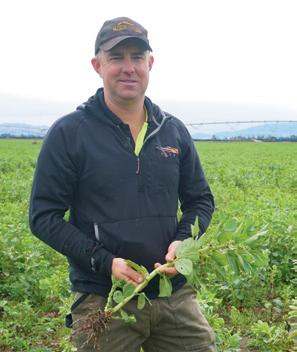
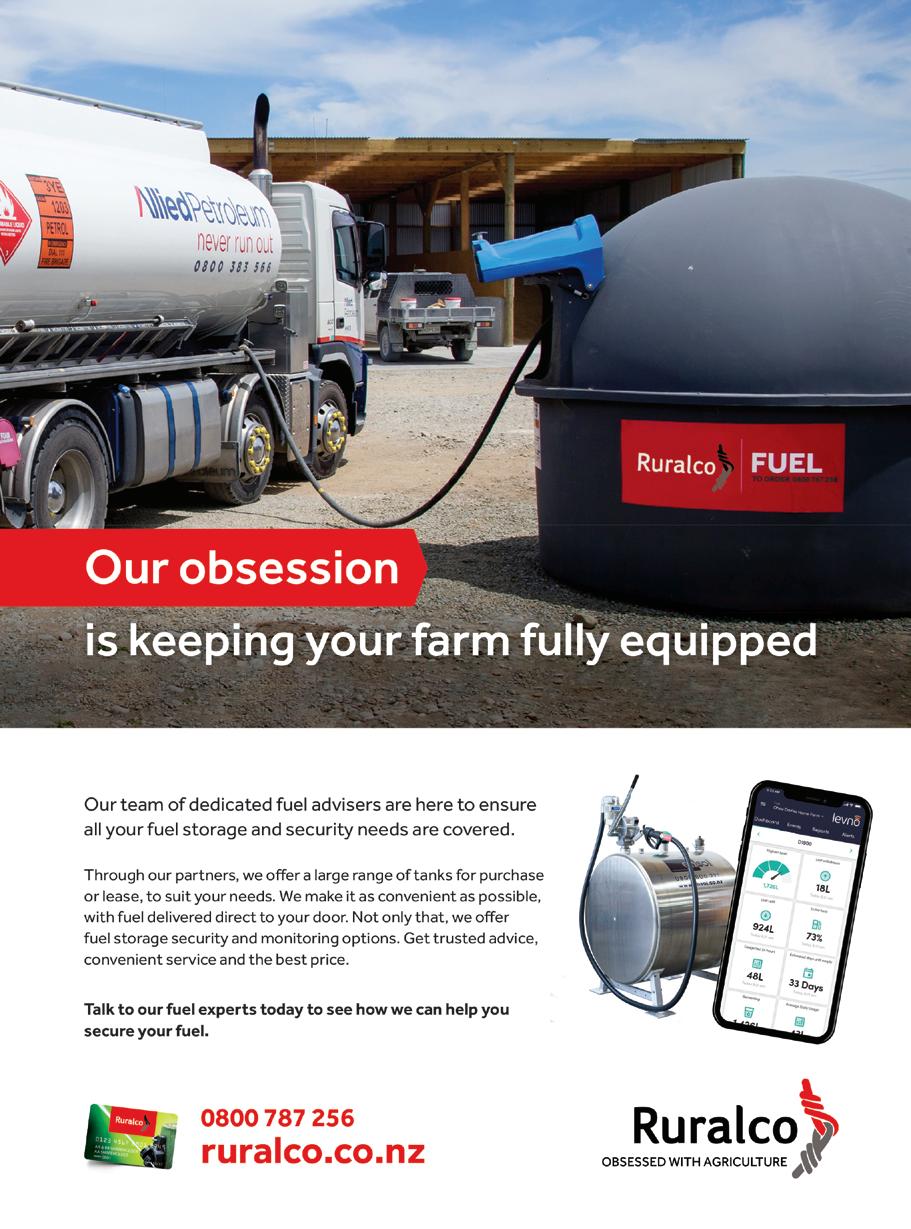

A petroleum company looking at ways to fuel vehicles and machinery without petrol and diesel? It may seem counterintuitive on the surface, but one New Zealand-born petroleum company is doing just that to ensure there is a future fuel to keep New Zealand moving.
Allied Petroleum has been in the business of keeping Kiwi’s moving since the early 90s. Operating a nationwide network of fuel stops from Kaitaia to Stewart Island and delivering bulk fuel solutions for a variety of rural and agricultural customers across New Zealand, Allied Petroleum knows the unique ins and outs of what’s really required on the road and in the paddocks for operations to be successful.
And that’s why the company is a key partner in HWR Hydrogen, a massive project that is taking the lead to ensure the heavy transport industry has an alternative, future fuel option in green hydrogen. HWR Hydrogen is driven by HW Richardson Group, the parent company to Allied Petroleum.
With the help of Allied Petroleum’s nationwide fuel stop network, HWR Hydrogen will help the transport industry transition to more sustainable operations. The plan is for the project to be delivered in two parts: dual-fuel technology in truck fleets, and eventually a hydrogen refuelling network.

Allied Petroleum General Manager Alastair Tennent says this is a project that can contribute to a more sustainable future for transport.
“We know that developing alternatives to traditional fossil fuels is an important part in reducing carbon emissions. It’s up to us as leaders in the fuels and transport industry to promote solutions and look for better, cleaner ways to operate.”
“Allied Petroleum is uniquely positioned to facilitate access to hydrogen for all modes of transport through our fuel stop network, with a number of sites able to be upgraded to include hydrogen refuelling facilities.”
But one step at a time. A trial of dual-fuel trucks and their performance in the HWR truck fleet is underway, and more than $15 million has been invested in the project. Trucks fitted with HWR Hydrogen’s dual-fuel system, which involves retrofitting the hydrogen system to an existing diesel combustion engine, will reduce up to 40% of carbon emissions in dual-fuel mode without compromising existing performance, routes, distances, or payload.
Hydrogen is made from electricity and water through a process called electrolysis, which happens in an electrolyser. During electrolysis, electricity is passed through water (H2O) to
separate the hydrogen (H2) and oxygen (O2) from one another.
There are no carbon emissions from this process when it is powered from renewable sources, making hydrogen produced in this manner completely green. The oxygen that’s left over is released into the atmosphere and is the only byproduct of this process.
But of course, if you’re running a vehicle on hydrogen, it will eventually have to refuel – and this is where Allied Petroleum is a vital delivery partner with HWR Hydrogen. While initially producing hydrogen in the south of New Zealand, HWR Hydrogen will eventually look to expand across New Zealand through the Allied Petroleum network.
“It’s a long road ahead, but we’re proud to be part of a project that looks to a sustainable future,” Tennent says.
The first hydrogen refuelling station is expected to open in Southland in late 2023.
THIS PROMOTIONAL FEATURE WAS PROVIDED BY ALLIED PETROLEUM


HISTORICALLY THE MID CANTERBURY RURAL SUPPORT TRUST OFTEN OPERATED IN A REACTIVE CAPACITY DURING ADVERSE EVENTS TO SUPPORT OUR RURAL COMMUNITY. ITS APPROACH HAS NOW BECOME MORE PROACTIVE AS IT CONTINUES ITS WORK TO SUPPORT AND STRENGTHEN OUR RURAL COMMUNITIES TO BE RESILIENT AND EMPOWERED.
WORDS SUPPLIED BY MID CANTERBURY RURAL SUPPORT TRUST
Events such as Mycoplasma Bovis, Covid related border restrictions and ongoing market challenges have seen the Trust place a greater emphasis on supporting farmers in a variety of ways and an unprecedented demand for counselling support. When circumstances beyond your control lead to a rural crisis, be it climatic, environmental, financial or personal, the Trust is ready to assist.
The Trust’s services are free and confidential, and help is available through an experienced team of facilitators who are rural people with local first-hand knowledge of the challenges that rural life brings.
One recent example was the instigation of an M Bovis team which supported farmers through the personal stresses which impacted on those whose stock contracted the disease. One local farmer summed up the support he received by saying, “As a bloke you think you’re strong enough and don’t need to speak to a stranger about how you’re feeling and what is bothering you. The second time that my farm was affected by M Bovis, I knew that I needed help and should speak to someone. The Trust was a constant support to us; the weekly phone calls gave me reassurance that someone was listening.” Other farmers share the sentiment whether it be support during adverse weather events: “The support we had from Rural Support over the floods was amazing for us and our farm team”; or during times of personal stress: “Rural Support; you helped me because you knew what I was going through. You supported me to get help.”
With Mental Health Awareness Week coming up in September, and World Mental Health Day on 10 October 2023, it is timely to ask ourselves the questions: Am I ok? Are the people around me ok? And it’s a good opportunity to make time to pick up the phone and call that friend you have been meaning to for so long or to call in on the neighbour you haven’t had time to catch up with. Rural organisations such as the Rural Support Trust, and Rural Women are fabulous entities that promote engagement within communities and should be supported by all generations to ensure those channels and connections that have been worked on for so many years, aren’t lost in time. The Trust will continue to be part of local events promoting community engagement which also give farmers an excuse and the encouragement to get off farm, such as last year’s professional development Succession Workshops, or an evening out to listen to a guest speaker like Matt Chisholm. In today’s world it is increasingly easy to rely on social media to communicate and relate to our neighbours and community. However, there is little that can replace the feeling of belonging and community that comes from getting off farm, meeting new people, and engaging face-to-face with people in similar situations. It is imperative that generations to come don’t lose sight of the importance of these interactions, the ability to pick up the phone and have a chat to someone who might need it, or just the spontaneity that comes with calling in on a friend and checking in on them and their wellbeing.
If you are interested in knowing more about Mid Canterbury Rural Support or you are concerned about someone, please call this number for our Wellness Co-ordinator: 0278787254.
AFTER 17 YEARS AT RURALCO, ONE OF THE TEAM’S LONGEST SERVING STAFF MEMBERS, SALLY CHILDS HAS RETIRED.
A familiar face to many, Sally joined Ruralco in 2006 in the Methven store. “I started one week before Instore Days. After a few months I moved to the back shop in Ashburton, where I stayed for almost 15 years before moving upstairs to the Customer Service Centre.”

All of Sally’s roles have seen her interacting with members on a daily basis. She has especially loved the conversations with farmers and customers. “I think farmers like to have a chat and bit of banter. It’s about knowing your people and how to respond and check in with them.”
Sally has always loved working with farmers especially in the areas of animal health. “I grew up on a sheep, beef and cropping farm in England. After leaving school I trained as a primary school teacher before moving on to sell animal feeds and supplies.” She worked locally in the veterinary industry for around 14 years, gaining a wealth of animal knowledge before starting at Ruralco.
She says it was great to bring that knowledge to Ruralco as it allowed her to utilise her technical knowledge around animal health products and feeds. Knowing when to use products and what might be the most effective at any one time helped build confidence with members who would often seek out Sally on return visits. “I think that specialised knowledge helps farmers plan ahead and get the right information at the right time to achieve the right results. Hopefully that’s why people keep coming back.”
Sally also has a passion for horses, and that equine knowledge was put to good use over her time at Ruralco, with her expertise seeing Ruralco’s offerings and knowledge in that space grow over the years.
Retirement will see Sally continue in her roles on the Ashburton A & P Show committee and as secretary of the Ashburton Area ESNZ Jumping and Show Hunter Shows, with both having big events looming in the coming months. “It probably won’t be until after these that the reality of retirement will set in,” she says. A trip back to the UK, more time for gardening, walking and catching up with friends are also part of the agenda moving forward. Sally will miss her catchups with Ruralco members and with the Ruralco staff. “I’ve always enjoyed the camaraderie of the staff over the years and I will miss that.”
WE BEGAN OUR PARTNERSHIP MELANOMA NEW ZEALAND A COUPLE OF YEARS BACK, HELPING TO SHARE LIFE-SAVING ADVICE TO PREVENT AVOIDABLE DEATHS AND SUFFERING FROM MELANOMA.

WORD & IMAGES SUPPLIED BY FMG INSURANCE
It’s important to us at FMG to help protect our clients, many of whom are farmers and growers who spend much of their time outdoors.
We’ve worked with Melanoma New Zealand at events and locations across the country. From Whangārei to Cromwell, Greymouth to Taumaranui, we’ve helped Melanoma

New Zealand get on the road to offer free education and spot checks looking for signs of skin cancer. Whether it’s the Northland Fieldays, National Sheep Dog Championships or Ruralco Instore Days, we’re committed to helping those in rural communities stay safe in the sun.
If caught early, melanoma is almost always curable so it’s crucial to understand how to protect yourself, what to look for and to get regular checks.
We’ve helped check over 1,500 spots, 181 of which were suspicious and referred for further follow-up. Of those suspicious spots, 26 were suspected to be melanomas. That’s a lot of families who now have the information and support they need.
If you’re concerned about a spot (freckle or mole) contact your GP to ask if they offer spot checks. You can book a free online consultation with a qualified Nurse Educator from Melanoma New Zealand. Simply visit melanoma.org.nz/appointmentbooking to see what appointment times are available.
Melanoma New Zealand’s website melanoma.org.nz has a wealth of information, including instructions on how to conduct your own skin check (checking your whole body looking for spots that are suspicious according to the A-G Guide), and handy tips such as keeping an eye out for the ‘ugly duckling’—spots that are different from the others around it.
If you’re a client of FMG, you can access Melanoma New Zealand’s online education for free. It includes practical information, takes about 30 minutes and includes a few surprising facts – for instance did you know that UVA rays penetrate deeper into our skin, but UVB rays are more aggressive? That’s why it’s crucial to use sunscreen that protects from both UVA and UVB. Visit fmg.co.nz/melanoma to get started.
So, with all this in mind we recommend you follow Melanoma New Zealand’s advice to:
• Slip on protective clothing;
• Slop on a minimum of SPF30 sunscreen 20 minutes before going outside, and reapply every two hours;
• Slap on a wide-brimmed sun hat;
• Seek shade, particularly from September to April, and between 10am and 4pm;
• Slide on close-fitting sunglasses.
We’re proud to now offer child sized wide-brimmed FMG hats in addition to our adult sizes, plus we provide sunscreen at our events. So next time you’re out and about, pop in and say hi, and grab a hat and a squirt of sunscreen.
To find out more about the FMG Spot Check Roadie head to fmg.co.nz/spotcheck-roadie
We often see an increase in melanomas during the spring months. Typically, it’s because we take off a layer of clothing as it gets warmer and we notice a spot we don’t remember seeing before.
GILL ROLFE, MELANOMA NEW ZEALAND’S NURSE EDUCATOR
“

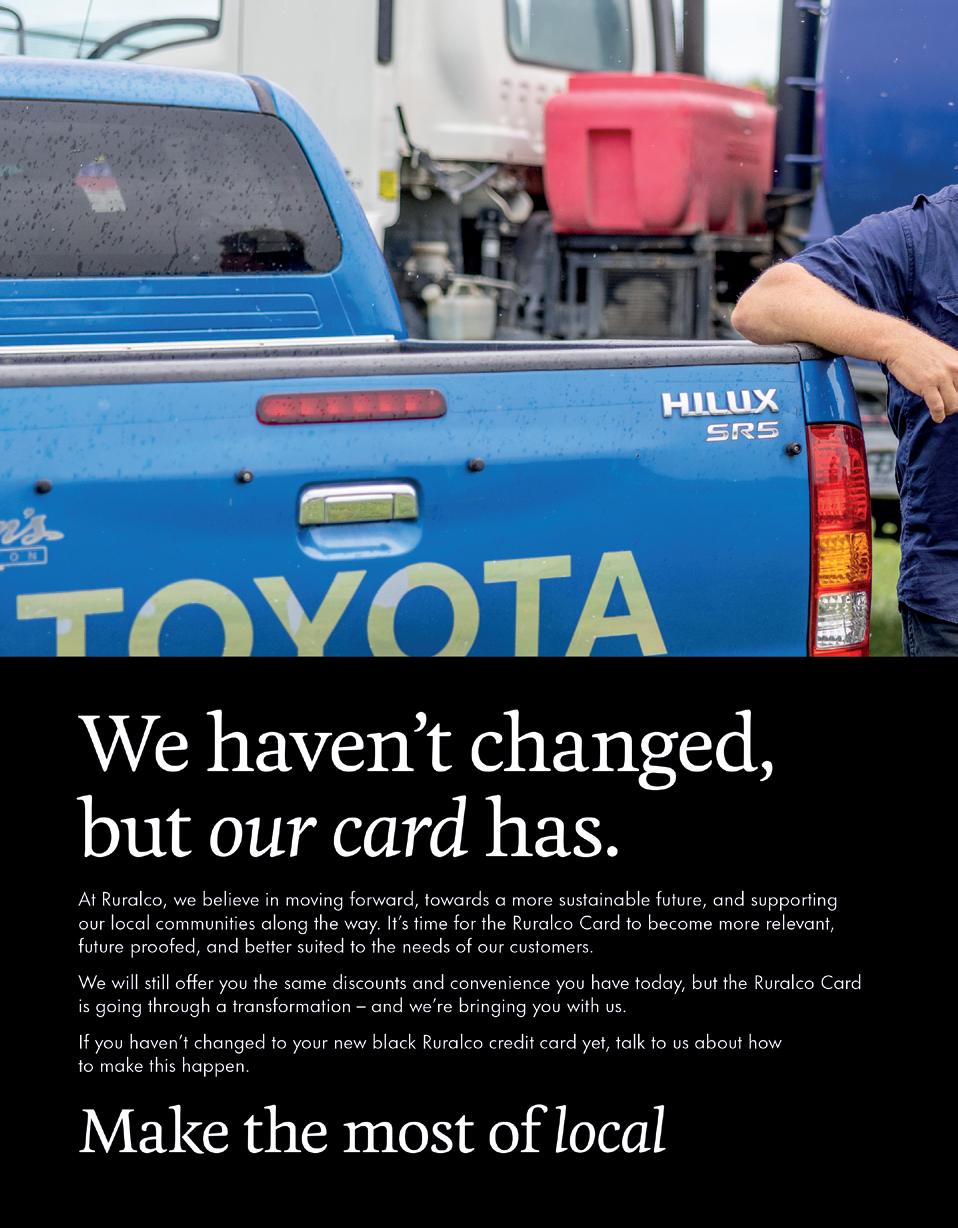


Look to your staff for the best advice on health and safety, rural contractors have been told by an industry expert.
Wayne Scott, who is CEO of the Mining/ Extractive sector’s health & safety organisation MinEx, told the Invercargill RCNZ conference that he wasn’t a big fan of consultants offering advice to businesses.
“All the information is with you already. The people working for you are the experts.” Wayne is also not a big fan of paperwork.
“If it’s a health & safety form that adds no value, don’t do it.”
There was far too much focus on filling in forms when rural contractors would do better to concentrate on engaging with their staff.
‘Please concentrate on the big stuff.’
Business owners also needed to challenge every assumption and remain in a state of chronic unease over health & safety.
“Don’t accept that shi** happens.” Wayne Scott says Kiwis were far too accepting of serious injuries and fatalities in the workplace.
“We feel sorry for the people and move on.”
The biggest causes of workplace deaths were vehicle incidents, falls and breaches of procedure.
Of particular relevance to rural contractors was that in quarrying there was an average of an ADT roll-over every week and three per week in civil contracting.
He says the Health & Safety at Work Act 2015 was world-class legislation, putting the onus on employers to manage risks on their own sites. One of the things MinEx does is encourage mines and quarries to report ‘near misses’ and then anonymises the information and reports it to the membership, to reduce the risk of similar incidents causing injuries on other sites. This has been taken note of by RCNZ. WorkSafe’s Deputy Chief Inspector of Extractives Dave Bellett also spoke to the meeting.
Two rural contractors told the conference that there didn’t need to be fear about WorkSafe.
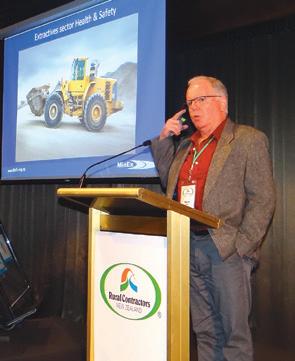
Former RCNZ President Steve Levet says after engaging health and safety ‘experts’ after he bought a quarry, he had WorkSafe visit. “They were really good to deal with.”
Bulls contractor Adrian Bennie echoed his comments. “Don’t be scared of getting WorkSafe in. They’re not going to hang you.”



IMAGE: In a normal year, lambs should not need a drench at tailing
types, Dr Dodunski says it is important not to set up new populations of drench survivor’ worms. ‘’Summer forage crops that will be turned over and re-grassed in the autumn require less attention to detail on this aspect than new grass paddocks.’’
The term ‘Refugia’ applies here—this refers to maintaining a population of worms that can still be killed by drenches when required. The first grazings of new grass paddocks would ideally be a light ‘nip off’ with undrenched ewes or hoggets, to ‘seed’ the pasture with a light mix of drench-susceptible worms. The most dangerous approach is to blanket-drench whole mobs of lambs onto new grass with a product of unknown efficacy.
In a normal year, lambs should not require a drench at tailing.
Dr Dodunski says routine drench at this time may not be generating as much value as farmers might imagine.
Spring marks the beginning of another farming calendar with sheep farmers striving to maximise the productivity and profitability of their lamb crops.
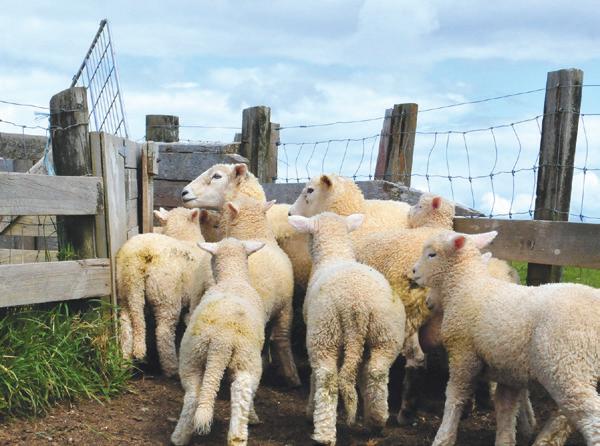
Internal parasites have the potential to significantly impact lamb growth rates, ewe productivity and farm profitability but on an increasing number of farms, standard combination drenches are no longer effective. Drench resistance is ubiquitous, and it is estimated that between 15-30 percent of sheep farms have resistance to triple combination drenches. This has the potential to threaten the viability of sheep farming.
Historically, many farmers have relied heavily on drenches to control internal parasites, but in the face of increased drench resistance, Wormwise vet Ginny Dodunski says the focus needs to be on management factors that can help farmers manage worm burdens without compromising productivity or profitability.
Every farm and situation is different but the underlying principles of well-fed breeding stock and provision of high volumes of quality, low worm challenge feed for their weaned progeny are key aspects that can be improved on many properties. In many situations a ‘reset’ is needed to prioritise the feeding and management of
those breeding animals to enable them to be farmed with lower or no drench inputs.
In addition, Dr Dodunski encourages farmers to work with their vet to put together a parasite management plan specific to their farm.
She says farmers will need to have some idea of what parasites are present on their farm as well as the performance of the various drench families against them. A Faecal Egg Count Reduction Test (FECRT) should be undertaken to establish a farm’s baseline resistance status, followed by regular drench checks to ensure the products used through the season remain effective.
‘’Provided the component chemicals are still effective, combination drenches are able to slow the development of drench resistance on a property but should be used in conjunction with other risk mitigation tools.’’
These tools include rotating livestock species and age classes during the course of the year so that the worm population on the farm is continually mixed up and using highly immune adult stock and alternative species (e.g cattle) to ‘clean up’ pasture larvae behind lambs.
Nutrition is one of the most important factors in determining an animal’s susceptibility to internal parasites. This means that as well-fed ewes or cows should not need routine drenching. Forage crops or new pastures are a valuable tool for minimising worm challenge, particularly to young stock. Though when grazing these cleaner feed
She says the scouring, reduced appetite and poor growth rates associated with worms are partly a result of a young animal’s developing immune response to internal parasites. Very young lambs have no immune response to worm larvae, so don’t suffer the same negative consequences associated with worm burdens seen with older lambs.
Many of the worms that young lambs are ingesting cannot complete their lifecycle so cannot build up numbers until the lamb has a fully functioning rumen at around five weeks of age. Another good reason for not drenching at tailing is the presence of a little worm called Strongyloides. This worm has a completely different lifecycle to other internal parasites in that lambs will pick these worms up through their skin or from the ewe’s udder.
Lambs do set up a rapid immune response to Strongylides at four to five weeks of age.
While lambs may appear dirty, this rapid immune response sees them dry up of their own accord irrespective of whether or not they have been drenched.
The only time lambs may benefit from a drench at tailing is where ewes are in poor condition, they are underfed and not milking, so lambs are forced to eat a lot more grass than would be typical. For more information go to www.wormwise.co.nz



for success.
WORDS & IMAGES SUPPLIED BY DAIRYNZ
There are many ways to tailor your mating program to ensure your cows have the best mating this season. However, the following three foundations are key to ensuring you get the best chance of reaching your mating goals.
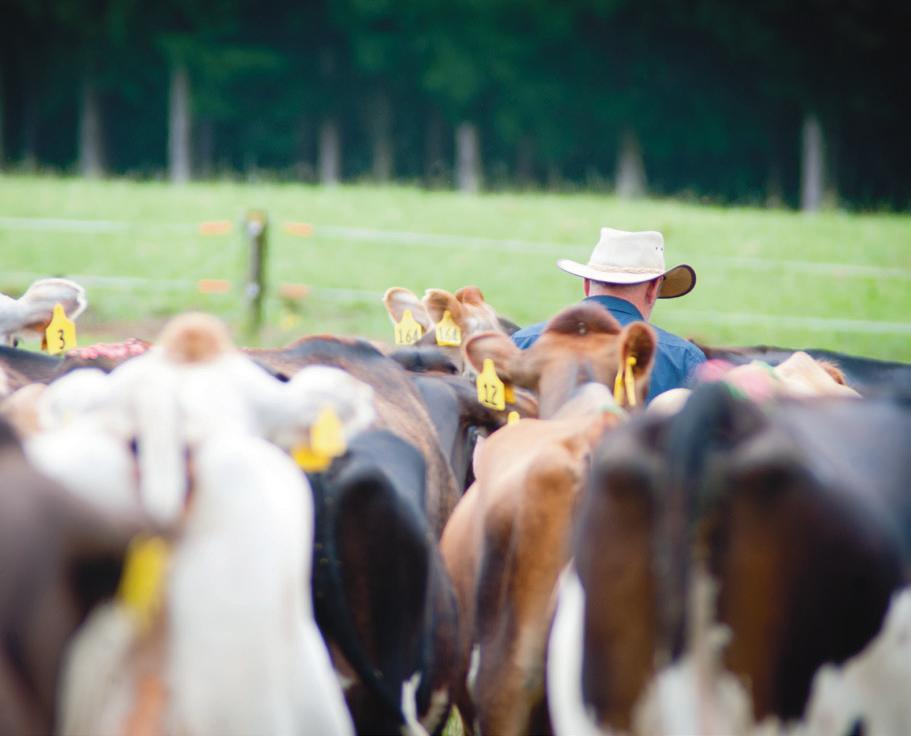
Cows calving in body condition score 5.0 for mature cows, and 5.5 for first- and secondcalvers, have substantially better reproductive performance than cows in lower body condition score. Switching to once-a-day milking in middle to late lactation can reduce condition score loss if done early enough. Cows, especially firstcalvers, milked once a day from calving, may
achieve higher submission rates and in-calf rates with fewer noncycling treatments, than if milked twice a day.
The 3-week submission rate of your earlycalved mature cows is a useful indicator of heat detection performance. Pre-mating cycling rate is like the herd’s submission rate in the three to four weeks before mating even starts.
If you get 85% of cows cycling premating, you should achieve a 90% 3-week submission rate to artificial insemination, along with a good conception rate.
Top farms achieve a 95% 3-week submission rate for the early-calved mature cows. If less than 90%, this is a strong indicator that heat detection rates are low, and reviewing your detection strategies should be a high priority. For more advice, head over to dairynz.co.nz/
heatdetection, or reach out to your local DairyNZ regional team or breeding company.
Motivate the team
Use the three weeks before the planned start of mating as an opportunity to upskill your team members, get them to start identifying and recording cows in heat, you could even use a WhatsApp or Facebook group chat. Encourage staff to take their time when in the paddock or sitting behind the cows to observe and record cows in heat.
Get your team involved by setting a target for a 3-week submission rate or 6-week in-calf rate, and report on the progress throughout mating to keep the team involved. Communicate the mating targets you would like to hit this season and celebrate the wins.
Check out the DairyNZ’s the InCalf book for eight key management areas for improving herd reproduction at dairynz.co.nz/incalf

The New Zealand farming sector plays a vital role in the nation’s economy, supplying food to local and global markets while contributing to the country’s social fabric.
WORDS SUPPLIED BY IRRIGATIONNZ PRINCIPAL TECHNICAL ADVISOR, STEPHEN MCNALLYHowever, amidst an era of rapid change, global population growth, and evolving consumer expectations, farmers are often bombarded with negative rhetoric that instils concern, stress, and anxiety.
It is essential for the farming community to recognise the importance of avoiding such negativity and instead surround themselves with knowledgeable and confident individuals who can provide support and guidance. By focusing on innovative and rewarding practices, that they know in their hearts are the right thing to do, while also aligning with community expectations and fostering a low impact on the environment, farmers can shape a prosperous future for social resilience. This article set out some personal thoughts on why it is crucial for the New Zealand farming sector to maintain confidence, embrace change, and dismiss the shackles of negative commentators, to unlock its true potential.
New Zealand farming families possess a unique skill set, honed through years of experience and a deep connection to the land. It is crucial to have confidence in these abilities and intuition when making decisions that impact agricultural practices. By recognising their expertise, farmers can build a foundation of self-assurance, enabling them to navigate challenges and embrace new methodologies confidently. Surrounding oneself with positive influencers who believe in the potential of agriculture helps to reinforce this confidence and foster an environment conducive to growth and progress.
The New Zealand farming sector has long been known for its commitment to innovative practices and environmental stewardship; after all their livelihoods depend on long-term good management of their individual ecosystems of soil, water, plants, and animals. By harnessing the knowledge resources available and staying updated on the latest research, farmers can continuously improve their methods and adopt innovative techniques that also align with community expectations. Embracing these good practices not only helps to mitigate the impact of growing food for humans on
the environment but also enhances its role in social resilience. By displaying a proactive and balanced approach to land and resource management, farmers can be leaders in building trust with consumers, strengthening the connection between the farming community and the wider society.
Regulations are often viewed as barriers that hinder progress and innovation. However, it is important to recognise that most regulations have been forced into existence to capture those who have been slow to embrace change and persist with outdated practices. It is human nature and maybe epitomised by the New Zealand way of life to value the freedoms our country offers. Viewing regulations as a framework for improvement rather than a hindrance can shift the perspective and allow the sector to stay ahead of the curve. While often coy about openly celebrating success there are many examples of where our farming families have been able to demonstrate within their communities what can be achieved. A well-founded business will dedicate time to adopting a formal risk-based approach, in most cases also allowing compliance, while fostering long-term success. By staying informed and implementing robust and strong decisionmaking plans that consider both short and long-term objectives, farmers can navigate regulatory requirements effectively.
Climate change poses significant challenges to the farming sector, including altered weather patterns, water scarcity, and increased pest pressures. However, rather than viewing these challenges as overwhelming obstacles, forward-thinking farmers can embrace climate change as an opportunity to innovate and enhance their operations.
One proactive approach that farmers can consider is the investment in infrastructure for water capture and storage, whether as an on-farm initiative or as part of a community response. As weather patterns become more unpredictable, ensuring a reliable water supply for agricultural needs becomes increasingly crucial. By constructing reservoirs, implementing rainwater harvesting systems, and utilising advanced irrigation techniques, farmers can mitigate the risks of water scarcity and ensure the long-term viability of their operations.
By taking an initiative-taking stance and investing in water capture and storage
infrastructure, farmers not only adapt to the challenges of climate change but also position themselves to thrive in the face of uncertainty. This approach demonstrates the positive and innovative mindset that drives the New Zealand farming sector towards a future that embraces opportunities rather than being hindered by climate-related challenges.
Negative influences, whether through media, peer pressure, or self-doubt, can limit progress and stifle innovation. It is crucial for the New Zealand farming sector to avoid buying into the rhetoric of fear and anxiety. Instead, farmers should seek out positive and knowledgeable individuals who can provide support and guidance. Building a network of like-minded individuals who share a vision for progress and a commitment to sustainable farming can help inspire confidence, foster collaboration, and drive innovation within the industry.
Taking a proactive industry-led approach to change means there is less need and opportunity to force regulatory intervention.
In conclusion, the New Zealand farming sector holds the key to overcoming challenges and securing a prosperous future through the principles of confidence, innovation, and sustainable practices. By fostering a supportive network of knowledgeable and positive influences, farmers can create an environment that nurtures growth and progress.
With a collective commitment to excellence, embracing change, and focusing on positive advancements, the New Zealand farming sector has the potential to remain a global leader in sustainable and innovative agricultural practices. By embracing the opportunities that lie ahead and working together, farmers can ensure a thriving sector that not only meets community expectations but also contributes to a low-impact environment and maintains social resilience.
The farming sector’s significance to the nation’s economy and cultural identity cannot be overstated. To ensure its continued success, farmers must resist negative rhetoric and instead concentrate on confidence, innovation, and good practices.
STEPHEN MCNALLY IRRIGATIONNZ PRINCIPAL TECHNICAL ADVISOR
ASHBURTON A&P SHOW
27 & 28 OCTOBER
22 NOVEMBER
26 NOVEMBER
ASHBURTON:
Monday to Friday: 8:00am–5:30pm Saturday: 9:00am–12:00 noon
Closed on public holidays & Saturdays when the public holiday falls on a Monday or Friday.
RAKAIA:
Monday to Friday: 8:00am–5:30pm Closed on public holidays.
METHVEN:
Monday to Friday: 8:00am - 5:30pm Closed on public holidays.
STORE CLOSURES:
23 October, Labour Day
Our Ashburton, Methven, and Rakaia stores will be closed from Saturday, 21 October to Monday, 23 October (Labour Day). We will be returning to business as usual on Tuesday, 24 October.
17 November, Canterbury Anniversary Day
Our Ashburton, Methven, and Rakaia stores will be closed on Friday, 17 November (Canterbury Anniversary Day) and Saturday, 18 November. We will be returning to business as usual on Monday, 20 November.
Check out our 2023 Forage Guide with details of the latest seed varieties across fodder beet, brassicas, grasses, and catch crops at ruralco.co.nz/forageguide.
The 2023 Pasture Pack Guide is out now showcasing a range of pasture pack options suitable for any purpose. Our packs have been designed to make selecting new pasture a simple process, with the added assurance only proven premium seeds are selected to produce ultimate results and ultimate pastures. Check out the latest guide online at www.ruralco.co.nz/pasturepacks.
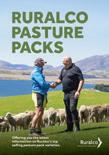
Our BOOST Mineral Blend is a specifically formulated water-soluble, multi-mineral blend providing essential trace elements for animal health. We can customise the mix to suit your dairy herd’s requirements, delivering it direct to farm.
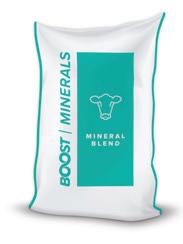
Talk to your Ruralco representative today to discuss the best mineral mix for your livestock or find out more online at www.ruralco.co.nz/boost
Fill up with Ruralco at selected Mobil and Allied Fuel sites across the country and save 12 cents per litre off the pump price. Find out which card is right for you and apply today at ruralco.co.nz

Our partnership with Ballance Agri-Nutrients gives you access to local fertiliser experts that can tailor a solid fertiliser plan to maximise your on-farm production potential. Together we can bring you science-backed and innovative nutrient solutions that will maximise your on-farm production potential delivering a measurable return on investment.
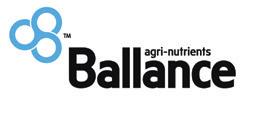
Make the switch to Ballance through Ruralco for all your fertiliser requirements. Talk to your Ruralco Representative today.
1. DO YOU KNOW WHERE YOUR RURALCO CARD IS?
If you can’t find your card, please let us know immediately.
2. ARE YOUR TRANSACTIONS LEGITIMATE?
Check your transactions on your statements or in your online account and let us know straight away if there are any purchases that were not made by you or any other cardholders on your account. You will be responsible for all charges made on a Ruralco card up to the point that you notify us of anything suspicious. This includes any transactions made on cards that may have been given to family members or staff. Your card security is very important, so always knowing where your card is and keeping an eye on your transactions will help you to pick up any unusual activity.
The 60th Annual General Meeting of the Ashburton Trading Society Limited will be held on Wednesday 22nd November 2023 at 5:30pm in the Bradford Room, at the Ashburton Trust Event Centre, 211a Wills Street, Ashburton. A formal notice of the meeting will be given in due course.
This is just a snapshot of the many great businesses where you can use your Ruralco card and save. Visit www.ruralco.co.nz for a full list of participating businesses near you and discounts available.
NORTH ISLAND
Masterton
Harvey Norman
Masterton
Up to 15% discount
Paraparaumu
Mobil Kapiti
12¢ per litre
Takanini
Mobil Porchester Road
12¢ per litre
SOUTH ISLAND
Ashburton
Bus & Truck Bodyworks
2023 Ltd
Up to 10% discount
Humunculus
Up to 5% discount
Roundtable Workplace Solutions
10% discount
Wilmech Truck & Trailer
Up to 10% discount
HOME APPLIANCE & INTERIOR
Christchurch
Alexanders Digital Marketing 10% discount
Drone Spray
Up to 8% discount
GLI Outback Caravans and Camper Trailers
FUEL FUEL
$1,000 off (conditions apply)
Greenwood Best price on the day
Hinds
PMR Grain Systems Ltd
Up to 5% discount
Methven
CONSULTANTS
CONTRACTING
TRAVEL
HARDWARE & BUILDING
Omarama
Ruts Plus
Free on farm demo
Rangiora
AJ Stewart Builders Ltd
Up to 10% discount
Rolleston
Tennyson Market Convenience
Winton
CONTRACTING
HARDWARE & BUILDING
SUPERMARKETS & BUTCHERY
ENGINEERING & MACHINERY
ANIMAL HEALTH
Nutri-Dose
Up to 4% discount
VEHICLE PANEL & PAINT CONSULTANTS
The Blue Pub 5% discount
Mosgiel
RESTAURANTS & LIQUOR
CLOTHING & ACCESSORIES
Mosgiel Tyre Centre Limited 20% discount
Murchison
TYRES FUEL
Whether you need a wedding or engagement gift, our gifting experts can find the perfect gift for any budget. Browse our high-quality range in store or online with free delivery nationwide.
VEHICLE SERVICING
Through our suppliers, Ruralco can design and implement a solar system for your business, enabling you to beat rising energy costs, offset emissions, and make better use of a natural resource to produce and store renewable energy.
Not only can solar power be used for powering irrigators and dairy sheds—it can also be used to offset the cost of lighting, heating and ventilation in farm buildings and homes.
Talk to the Ruralco team today on 0800 787 256 to find out how we can help introduce solar to your business.

Mobil Murchison 12¢ per litre

We’re excited to bring you home heating, with fuel delivered direct to your home fuel tanks.
Through our suppliers, we have options to suit your needs whether you require monthly deliveries or just as and when you need them. Our suppliers offer fuel directly to your home and are experts at this service. They have trucks of all different sizes, with smaller models light enough to access your driveway.
Talk to one of our experts to find out more about home heating solutions today.
Don’t forget Christmas is around the corner. Ruralco Home is your one stop shop for all your Christmas décor and gifting. Get complimentary gift wrapping on every present purchased in store. Keep an eye out for our Christmas trees popping up in store soon. Follow us on social media for all of our updates, exciting new products, great gift ideas and home décor inspiration.
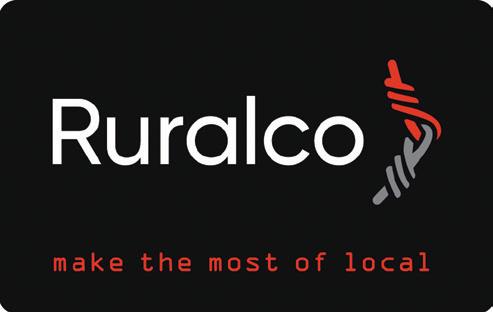




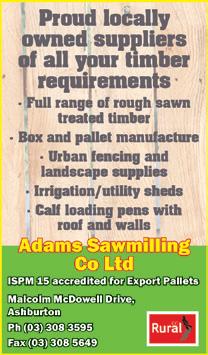

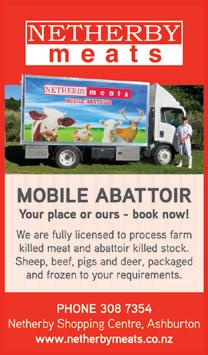

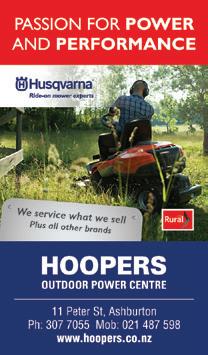







FENCING




